A Tough Nut to Crack: Kind Snacks Tackles Sustainability in Almond Orchards

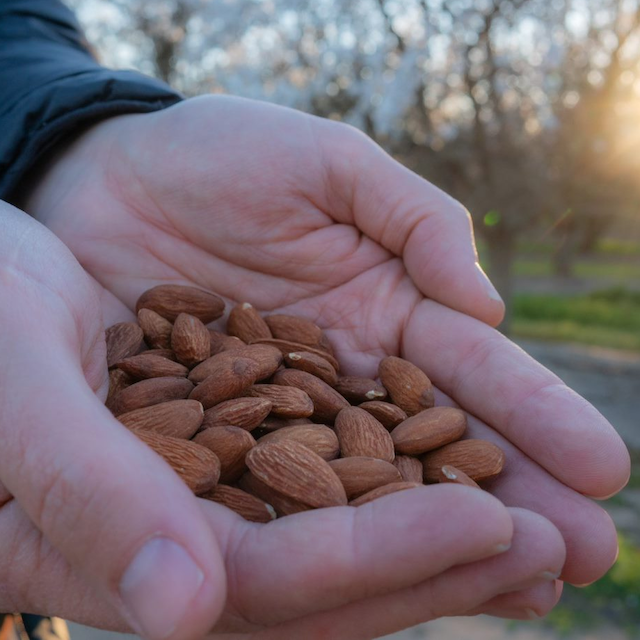
(Image courtesy of Kind Snacks.)
Orchards blanketing California’s Central Valley produce 80 percent of the world’s supply of almonds, and all of ours in the United States. Touted as a superfood, they’ve soared in popularity since the 1980s — with Californian production increasing seven times since then. Filled with nutrients and antioxidants, almonds help lower cholesterol and blood pressure, strengthen bones, and improve blood sugar control and gut health.
But almonds are a thirsty crop, which can be problematic under water shortages in California. So Kind Snacks, a producer of snack bars and cereal, is delving into the nuts and bolts of almond farming. Last year, it launched a three-year pilot program, the Almond Acres Initiative, to test regenerative agriculture and new technologies in partnership with one of its top suppliers, Ofi.
With a year of promising progress under their belt, the organizations are expanding the Central Valley project to include a second, drier site. Undaunted by dust and dehydration, they’re hoping to make our favorite nut a little better for everyone.
The bitter side of almond orchards
Almonds give us marzipan, Amaretto, amaretti cookies and so much more. But there’s a downside to this delicious nut.
It’s no secret almonds need a lot of water. With 3.2 gallons required per nut, that’s a higher water footprint than other major California crops. However, this elevated water use is in line with other fruit and nut trees.
Further, that water doesn’t just go toward nuts — other parts of the almond tree can be put to use too. The protective layer around the almond shell, the hull, can be used as livestock feed, while the shells can be used as mulch or bedding.
Besides water, pesticides are also applied in abundance on almonds. In 2022, nearly 31 million pounds were used in California, making almonds one of the state’s dirtiest crops. These chemicals can damage biodiversity, harm workers and people living nearby, and pollute water, soil and air.
But it’s not all bad news in almond orchards. Almonds have a relatively small carbon footprint, 20 times lower than that of beef. And almond milk production requires less land and water than dairy milk and causes less pollution.
Kind’s approach in a nutshell
Despite these challenges, Kind launched an ambitious project to improve almond production.
“When we launched Kind’s Almond Acres Initiative in 2023 last year, we started with the commitment that 100 percent of our almonds would be sourced from farms leveraging regenerative agriculture by 2030,” said Lindsay Philpott, sustainability communications manager at Kind.
Regenerative agriculture focuses on soil health while also improving yields, lowering water use and reducing carbon emissions. To reach that goal, Kind and Ofi are testing five agricultural approaches and a new set of tech tools.
“We're starting to test there with the hopes that the test will give us the information we need to scale across our supply chain to meet that 2030 commitment,” Philpott said. “So getting as much information out of this pilot as possible, so we can go to other growers and say, ‘Here, we've tested this over the course of three years. Here's what we're finding. Here are the practices we think would be most beneficial. And here's how we can support you in scaling those practices.’”
While the pilot project started with an initial 500 acres in Madera County, California, that acreage is doubling. The new test site, located in Bakersfield, California, was chosen due to its drier climate.
Kind is not alone in its endeavors. It’s working in collaboration with a whole cadre of partners including the California Water Action Institute, the Pollinator Partnership, the University of California, Davis, and the University of California, Merced.
From pollination to high-tech tools
The Almond Acres Initiative starts at the very beginning: pollination. Similar to many crops, bees are critical for almond farming. Yet honeybees are in trouble. In 2023, nearly half the colonies in the U.S. died from pests and disease, extreme weather, lack of food, pesticides and climate change.
Kind is testing a new approach to addressing the issue with the beekeeping tech company Beewise. It’s using a solar-powered beehive combined with robotics and artificial intelligence to combat bee decline. By detecting problems early on, it reduced colony losses by 70 percent. And closing the hive can reduce bees’ exposure to pesticides.
Once the bees have done their part and the almonds start growing, Kind is testing a number of other regenerative agriculture techniques.
For example, burying irrigation lines underneath the soil saves water. Known as subsurface drip irrigation, this technology has used 30 percent less water in the pilot so far, said Zac Ellis, senior director of agronomy at Ofi. It also reduced the amount of weeds, translating into fewer herbicide applications, and decreased humidity, reducing disease risk. But this type of irrigation system is more expensive to install than a traditional one, and pocket gophers can pose a problem.
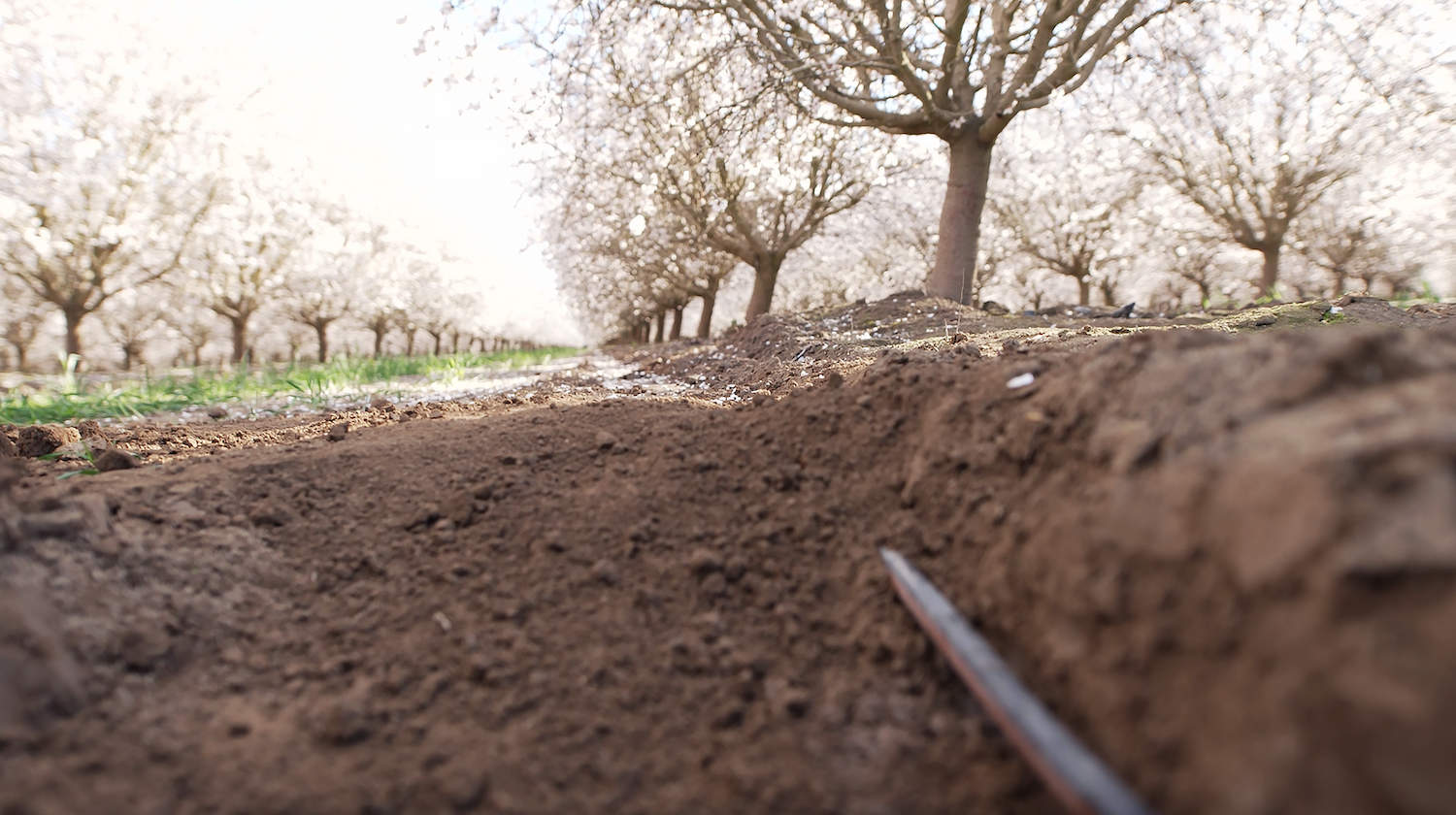
Another technique in the testing mix is cover crops. Planted between the trees, they improve soil health, prevent erosion, suppress weeds and encourage water infiltration. These plants also provide forage for pollinators and uptake carbon.
Kind also applies compost and biochar, or a charcoal-like substance made from burning almond shells, to the soil. These materials improve soil quality, retain water and sequester carbon. But since biochar is expensive, they’re also examining if applying almond shells alone can do the job. If that weren’t enough, a fertilizer with a significantly lower manufacturing carbon footprint is also part of the test.
A set of high-tech tools from Landscan helps optimize these last techniques. The company produces high-resolution spatial mapping of soils four feet in depth. This detailed information on soil quality and nutrients helps target applications of fertilizer and biochar, potentially reducing their use.
Harvesting to an almond tree’s end
Once those delicious almonds are ready for harvesting, Kind has another suite of approaches up its sleeve. At harvest time, almonds are normally shaken off the trees and then swept into rows. For this project, an off-ground harvester catches almonds directly from the trees and then lays them in rows to dry. Bypassing the sweeping step reduces soil disturbance, dust and equipment use. While the current adoption of this technology is low, Kind hopes its pilot can demonstrate the benefits to farmers.
In the final phase — when almond trees are nearing the end of their productive lifespan — they’re recycled. Traditionally trees are burned, but areas of California are phasing out the practice. In contrast to this fiery end, whole-orchard recycling involves grinding old almond trees into chips. This biomass is applied to the orchard floor where it improves soil health, nutrient levels and water retention, and eventually boosts almond yields. This method can be costly, but some financial incentives are available for farmers.

Almond farming for the future
Overall, these practices improve sustainability while also fighting climate change. For example, practices like whole tree recycling and low-carbon fertilizer reduce an orchard’s carbon footprint, Philpott said. And soil health practices help sequester carbon while bolstering orchards against weather extremes like flooding or drought.
“The reality is we're working in California, which is on the front lines of the changing climate,” Philpott said. “So it's not something that's far off in the future that we're trying to do now. We're actively working to adapt.”
Since the pilot is ongoing, it’s too early to share concrete results. But Kind is excited by some of the progress it’s seeing in soil health so far, Philpott said.
The path forward
As the state’s top-valued agricultural export, the almond industry was worth $4.65 billion in 2022. The global almond market is predicted to grow by 5.5 percent until 2029.
Kind’s pilot project could help soften the industry’s impact while providing a variety of benefits for the environment and farmers alike.
“If we know that one of our larger impact ingredients is almonds, and we buy a lot of them, how can we move the needle in a way that's impactful not only for Kind and our goals but for the broader industry?” Philpott said. “That's our hope.”
Editor's Note: Travel and accommodations to California’s Central Valley were provided by Kind Snacks. Neither the author nor TriplePundit were required to write about the experience.
How Innovators Are Solving the Wind Industry’s Recycling Problem
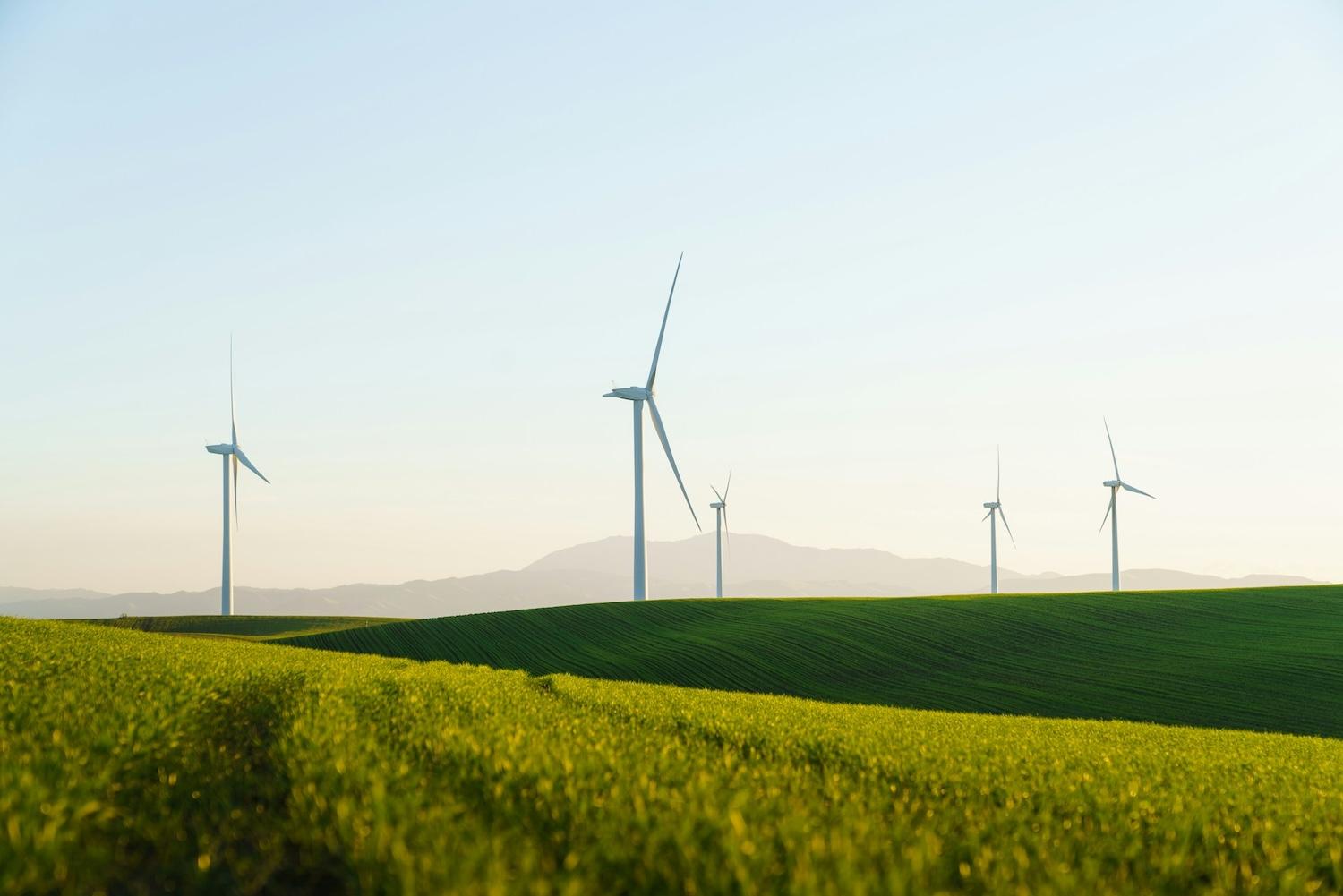
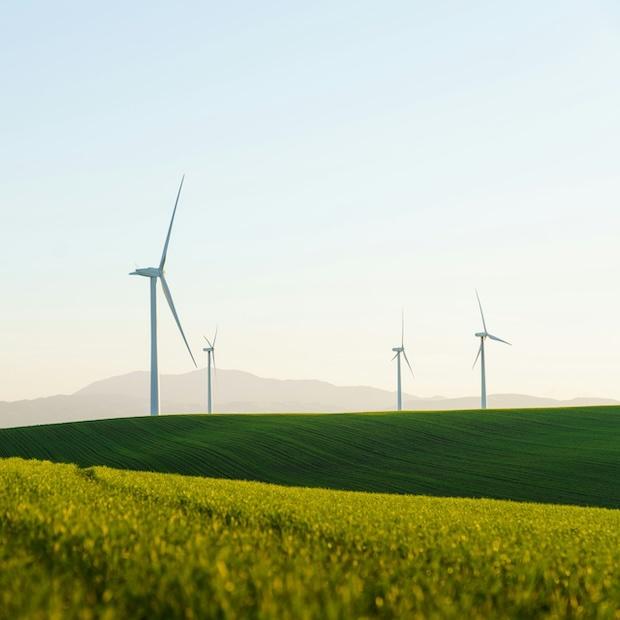
(Image: Zac Wolff/Unsplash)
The U.S. wind industry often faces criticism for failing to recycle decommissioned wind turbine blades. Thousands of these massive pieces of equipment are piling up in disposal sites across the country, and there are many more to come. That is a bad look for an industry that deploys sustainable energy as a selling point. Fortunately, new tools are emerging to help the industry build more circularity into its green profile.
Solving the turbine blade riddle before the numbers add up
Wind turbine blades are relatively new to the waste disposal and recycling streams, but their numbers are set to rise rapidly in the coming years. About 90 percent of U.S. wind turbines were installed after 2012, according the U.S. Department of Energy. Assuming a 20-year lifespan for a typical wind turbine, that adds up to an estimated 10,000 to 20,000 blades to be disposed of each year between 2025 and 2040.
The Energy Department’s National Renewable Energy Laboratory (NREL) took a look at the situation in 2022 and warned of a significant gap between the nation’s current blade recycling resources and the number of blades to be recycled in the future. Among other issues, the massive size and weight of decommissioned blades make it expensive to transport them to a recycling facility, NREL noted. Disposal in the nearest landfill is a more economical alternative, though not necessarily a more sustainable one.
The NREL team estimated that up to 78 percent of decommissioned blades will end up in landfills under a business-as-usual scenario. That estimate is supported by studies showing that turbine blades account for a small fraction of the global waste stream. One study published in 2021, for example, found that turbine blades will take up just 1 percent of available landfill space by 2050. In other words, the raw numbers suggest that landfilling turbine blades is not a particularly significant waste disposal issue.
Nevertheless, the U.S. wind industry has a strong reputational motive to adopt recycling over landfilling. In addition, a growing number of farmers and other businesses are deploying their own wind turbines on-site to support their sustainability goals, a movement supported by the U.S. Department of Agriculture. These hyper-local renewable energy stakeholders form another constituency with an interest in finding more holistic alternatives to landfilling.
Near-term solutions for turbine blade recycling
Unlike other parts of a wind turbine, blade materials can’t be separated from each for recycling. Because they need to be strong, durable and lightweight, turbine blades are made from advanced composite materials containing glass, carbon fibers and epoxy binders.
“Blades are designed to last a long time, and the fundamental nature of a composite is you are combining dissimilar materials together that are not designed to come apart,” Patrick Sullivan, a strategy director at Owens Corning, which manufactures glass fibers that are used in the composite materials for wind turbine blades, told TriplePundit last year.
As one indicator of progress, last month the Energy Department announced six winners in its Wind Turbine Materials Recycling Prize program. Drawn from an initial cohort of 20 teams selected in January, the winners were judged according to their potential for advancing from the prototype stage to demonstration-scale systems and eventual commercialization.
One of the winners, the Iowa firm Critical Materials Recycling, is developing a more environmentally-friendly approach to retrieving the magnets used in various parts of a wind turbine. The other five winners focus specifically on blade recycling.
Among those five is the Cimentaire project in Houston, Texas, which makes a protective waterproof coating for concrete out of ground-up turbine blades. Another Texas company, United Standard Materials Corp., deploys a process called flash composite recycling to convert fiber-reinforced composites into the widely used compound silicon carbide. Among other uses, the compound can be used to improve the durability of new turbine blades. The flash composite system also produces hydrogen as a byproduct, which can be deployed in fuel cells, fertilizer production, and other industrial systems.
Shredding turbine blades is another commercially promising strategy recognized by the Energy Department. In that area, the West Virginia firm Fletcher Engineered Solutions is developing transportable equipment that can shred an entire blade on-site, without the time and expense of cutting it into sections beforehand. Similarly, GreenTex Solutions of South Carolina is developing an on-site shredder with the aim of using the material to produce flooring panels, which can also be recycled when their lifespan is over.
A third winner in the shredding space is the Wind Rewind project at the University of Maine, which plans to use shredded wind turbine blade material as a low-cost additive to plastic used in large-scale 3D printing.

The “limitless” wind turbine blade of the future
The six finalists each earned a $500,000 cash prize along with technical support to help them take the next steps toward demonstration, validation and commercialization.
In the meantime, the Energy Department also supports research aimed at encouraging the wind industry to adopt new materials that allow for turbine blades to be reused, rather than granulated or shredded. The challenge is to reassure the wind industry that the new materials perform as well, or better than, conventional turbine blade materials.
One significant area of focus is the resin used to bind turbine blade materials together. In August, NREL announced a milestone study in the development of a new bio-based resin. The new resin enables recyclers to deploy a low-impact chemical process that dis-assembles turbine blades into their component materials. The materials are intact and can be reused multiple times.
“It is truly a limitless approach if it’s done right,” Ryan Clarke, a postdoctoral researcher at NREL and lead author of the new study, said in a statement. His team found the bio-based resin to perform "on par" or better than those in use today.
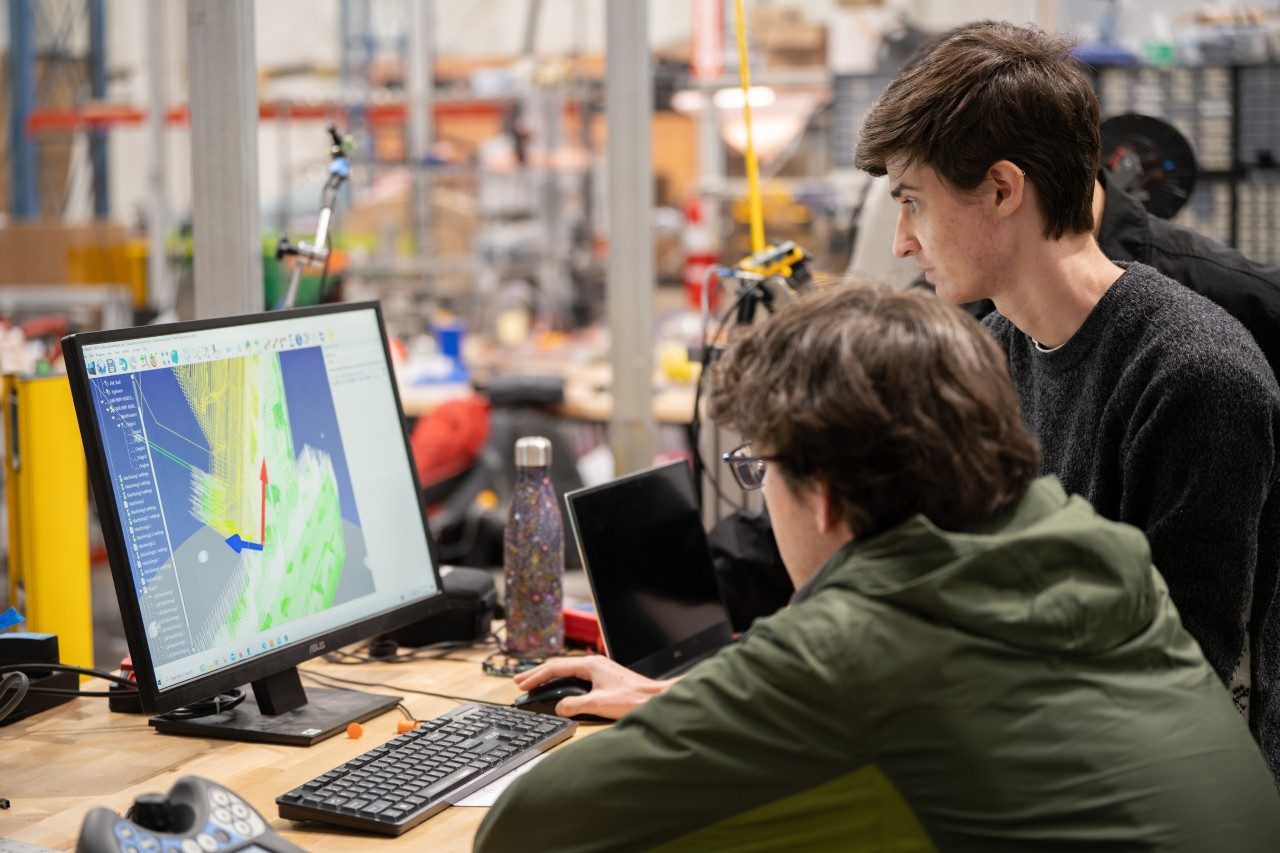
A similar project is underway at Virginia Tech. Funded in part by the Energy Department, the Virginia Tech team is working on an ambitious turbine blade manufacturing method that combines large-scale 3D printing and high-performance design with a new, fully recyclable polymer composite. The process eliminates the use of hazardous materials, enabling the composite to be reprocessed into new blades.
As an additional benefit, the Virginia Tech team aims to manufacture turbine blades at or near the site of installation, avoiding the considerable cost of transporting whole blades from a distant factory.
Zooming out to see the big picture, the environmental issues confronting the wind industry are pea-sized compared to the boiling stew of disaster brewed up by the fossil energy industry over the last century. Still, wind stakeholders can — and should — set their own bar for progress and take advantage of a more circular, sustainable way to manage end-of-life for turbine blades.
The U.S. Must Combat a ‘Wild, Wild West' of Misinformation to Scale Clean Energy, White House Aide Says
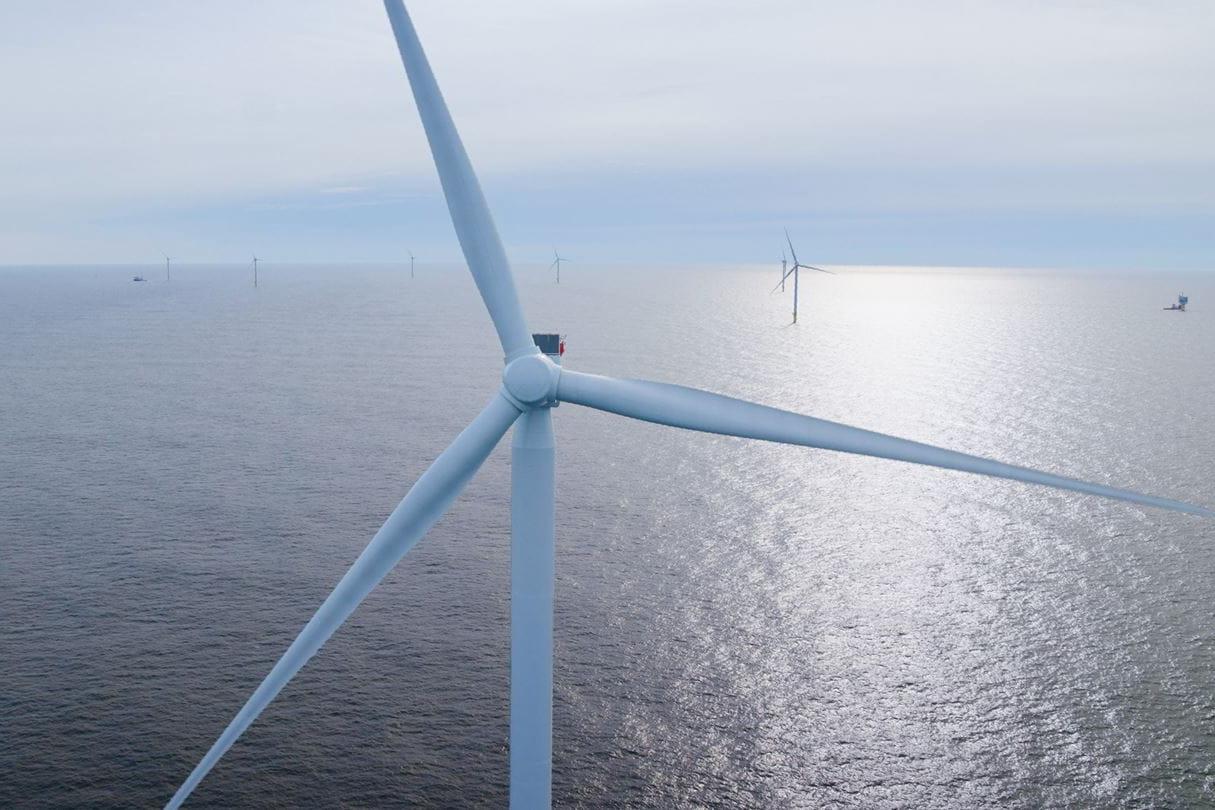
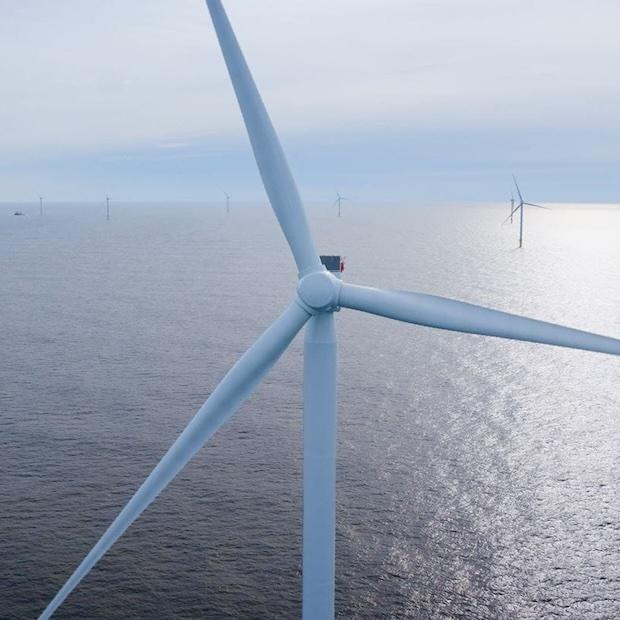
South Fork Wind, 35 miles east of Montauk Point, is New York's first offshore wind farm that is already sending power to the state's electric grid. (Image: Ørsted South Fork Wind)
As someone who lives a mile from New England’s second largest commercial fishing port, the most controversial bumper sticker I used to see on my neighbors’ rusty pickup trucks was, “Tilapia is NOT Seafood.”
While the merits of eating factory farmed fish versus the tons of fresh flounder, halibut, sea bass and squid processed in Rhode Island’s Port of Galilee has not abated, the much louder battle cry over the last couple of years has been focused on the dozens of offshore wind turbines under construction off Block Island, Martha’s Vineyard and the south fork of Long Island.
Unsubstantiated claims tying ocean wind farms to the deaths of whales and birds have become a rallying cry during the presidential election. When debris from a faulty turbine blade forced the closing of a beach on Nantucket during the peak summer season, calls for a construction halt became even louder.
It’s against that backdrop White House climate adviser Ali Zaidi provided a progress report Monday on whether it is still possible to achieve President Joe Biden’s goal of generating 30 gigawatts of clean electricity by 2030 as part of the U.S. battle to reduce the greenhouse gas emissions causing climate change.
“We've greenlit enough projects to build out 15 gigawatts of that offshore wind resource,” Zaidi said at a Reuters sustainability conference in New York, acknowledging cost overruns and production mistakes have also stymied progress.
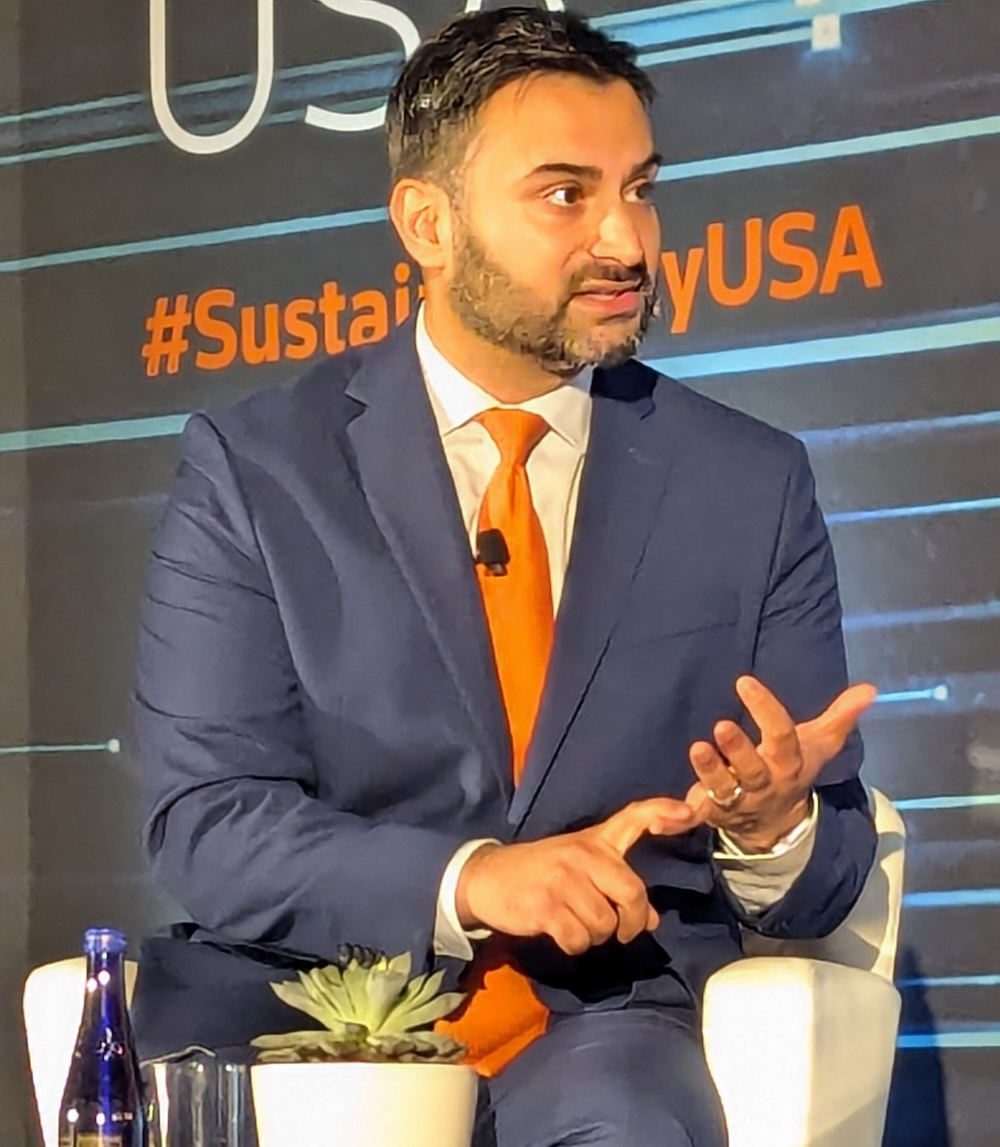
South Fork Wind, 35 miles east of Montauk Point, New York, is currently delivering electricity to the state's grid, Zaidi said. Dominion Wind, 27 miles off Virginia Beach, is on budget and on schedule.
“I think there's a lot of learning that's coming out of this first round of projects. There's a lot of investment into the supply chain which now reaches 46 states across the country,” Zaidi said, adding that the United States is playing catch-up with Europe on offshore wind development.
On the topic of misinformation heading into November’s election, the Biden aide admitted that debunking conspiracy theories is a substantial distraction.
“I think part of propelling a clean energy transformation in the United States is making sure folks see the cause and effect in a positive way. It becomes more complex when you've got people surging misinformation,” Zaidi said. “The vehicle transformation is one example, where the petroleum producers have actually been funding the ads to mislead folks about what our policy is, which is a policy around choice, affordability and making things in America — not about bans or mandates."
He sees combatting misinformation as "just part of the terrain these days," adding: “I think it's a task made more difficult by the wild, wild west online. But it's an important thing for us to figure out if our democracy is going to meet the test of this incredible crisis.”
How Co-Ownership Built a Strong Relationship Between an Indigenous Community and a Mining Company
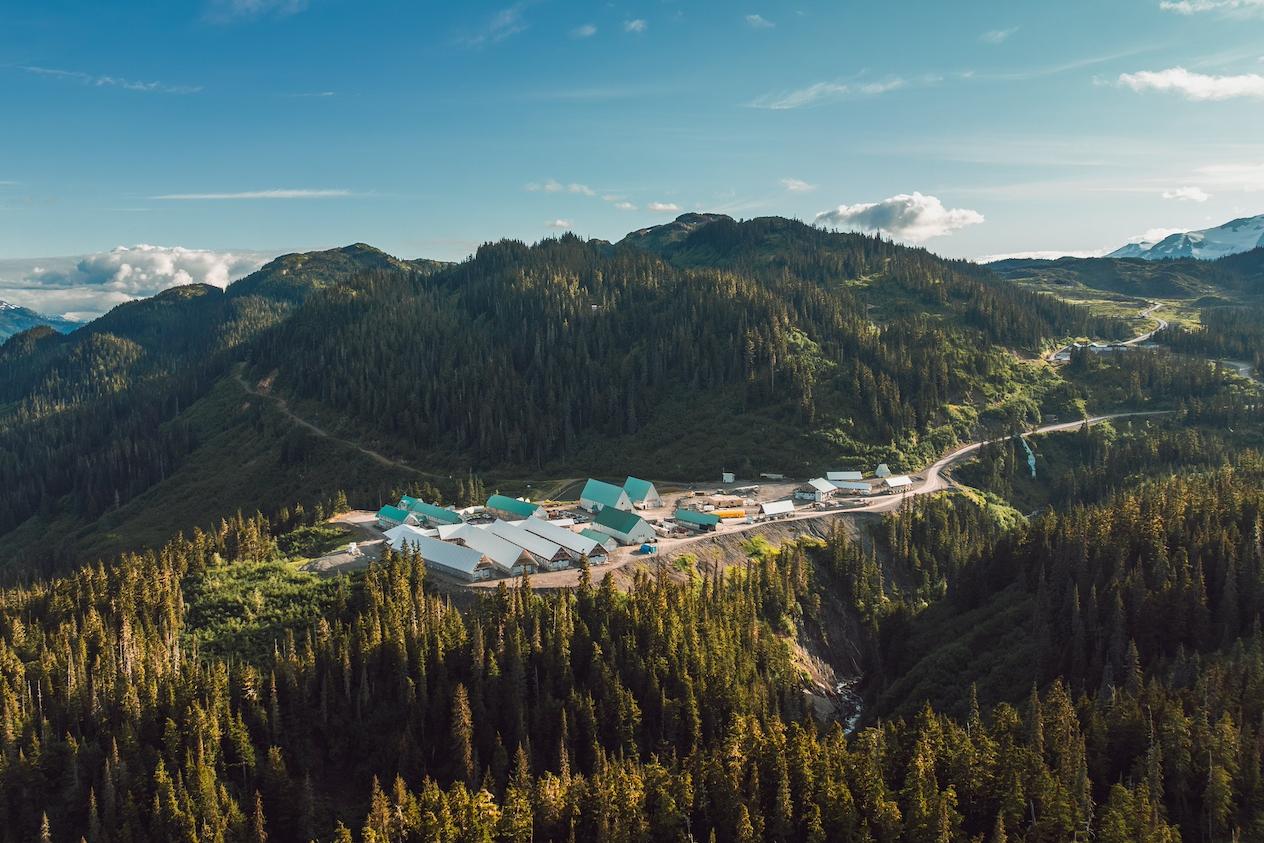
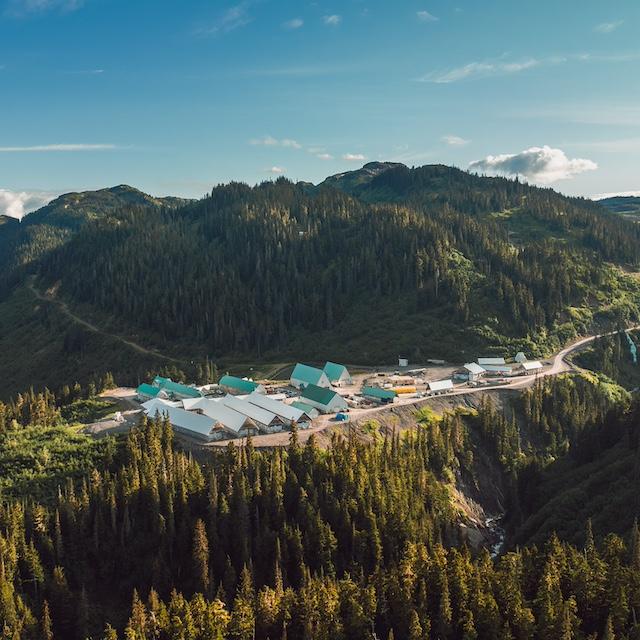
The Eskay Creek mine site co-owned by Skeena Resources and the Tahltan Central Government in Northwestern Canada. (Image courtesy of Skeena Resources.)
This article is part of our series on responsible mining solutions. The push for clean energy is fueled by a growing demand for minerals, but conventional mining has a track record of harmful social and environmental impacts. Here is another potential solution to that problem.
It’s estimated that 54 percent of transition mineral projects around the world are located on or near the lands of Indigenous peoples. That means working with Indigenous nations — and obtaining free, prior and informed consent to explore a mineral deposit — is paramount to the clean energy transition.
If we want a cleaner energy grid — and things like electric vehicles, solar power and battery storage — we need minerals like copper, lithium and nickel.
The pursuit of one good, however, must not compromise another. The push for renewable energy should not come at the expense of the rights and freedoms of Indigenous peoples.
The mining industry is awakening to the fact that it needs the consent, cooperation, and collaboration of the Indigenous nations on whose lands they operate to extract and process minerals, even when federal or state regulations are not in place.
Legacy mining issues include human rights abuses and environmental disasters, along with corruption, elaborate tax evasion schemes and suing countries in international court, so communities are understandably cautious when considering a mining project. One potential solution to managing the mining industry and Indigenous nation relations is through co-ownership.
What is co-ownership?
Co-ownership provides an equity stake in the company, as well as a seat at the executive table. That way a community is not just aware of company decisions that affect them, they can actually influence those decisions. Communities not only share the profits of the project, they also contribute funds and risk losses.
In mining, this is very rare. Only a handful of projects have some semblance of co-ownership. The environmentally disruptive nature of mining projects, immense start-up capital required, volatile nature of mineral markets, and often decades-long permitting processes are some of the factors that prevent communities from engaging in co-ownership with mining companies.
But in renewable energy projects, co-ownership models are more common. Solar and wind projects are much less disruptive to the natural environment than mining is. And they require less start-up capital and permitting, contributing to a more easily accessible and attractive investment opportunity for local communities.
In Canada, over half of the renewable energy projects launched between 2010 and 2020 on Indigenous territories were wholly or partially Indigenous-owned.
The case of Skeena Resources and the Tahltan Central Government
Skeena Resources is exploring a gold-silver mine at Eskay Creek, which sits on Tahltan land in Northwestern Canada. As conversations and the relationship between the two parties grew, the Tahltan Central Government eventually made a $5 million CAD ($3.71 million USD) equity investment in Skeena Resources in 2021. This co-ownership agreement is one of the first of its kind in mining.
“Skeena’s leadership recognizes that communities have to benefit from these projects, or there is no reason to support them,” said Allen Edzerza, Tahltan Elder.
Edzerza sits on the Tahltan Elders Council and has led negotiations with Canadian governments and industry. He spoke to TriplePundit as a community leader, not in any official capacity representing the Tahltan Government.
“I’ve visited the Skeena mine,” Edzerza said. “I’ve looked at how they plan to deal with acid rock and tailings, and all of that seems like a strong plan. They’ve worked with us to protect some lands, and they’ve hired Tahltan into senior positions in their company. One would hope that this relationship will continue to evolve and build trust with each other.”
The Skeena project is still in exploration but will move into production in the coming years.
“The Tahltan have a piece of equity in the company now, but we fully expect that’s not the end of the road or the total sum,” said Justin Himmelright, senior vice president of external affairs at Skeena Resources. “That was the exploration stage, and now we’re moving into a producing mine model, and those discussions are going to continue.”
Coordinating with the Tahltan, “has been tremendously helpful in streamlining and taking a lot of the friction out of all of our regulatory submissions,” Himmelright said.
The benefits of working so closely with the Tahltan go beyond just the regulatory streamlining.
“There's an inherent value that I don't think you can quite put a finger on, but it's the relationships,” Himmelright said. “It’s the ability to work closely with people around common goals and to share aspirations with each other. Trust and respect build fantastic productive relationships when it comes to advancing projects and initiatives together.”
While recapping a seven-year relationship in a few paragraphs misses the nuance involved, whenever there were disagreements between Skeena and the Tahltan, their common goals allowed them to overcome those differences.
“Just like any relationship where the parties involved have trust and respect for each other, you have the capacity and the desire to sit down and have honest conversations to achieve some kind of reasonable outcome that works for both parties,” Himmelright said.
“When you get a mining company coming in like this, it's like a marriage,” Edzerza said with a smile. “You’re going to be together for a long time — maybe 20, 30 or 40 years. You have to learn how to dance together. You have to learn how to talk to each other in a respectful way and say, ‘Hey, I have a problem. Let’s figure this out.’ And that goes both ways.”
Replicating the co-ownership model
While Skeena is by no means a small company, its current market capitalization is $1.26 billion CAD ($933 million USD), in the mining world it is relatively small. That, in part, allows the company the flexibility and freedom to pursue this type of innovative collaboration with the Tahltan — something that might be more difficult for larger companies to do.
The Tahltan will look to build on the agreement with Skeena when they enter negotiations with some of the mining giants beginning to show interest in the territory.
“There are over 100 exploration companies on our territory,” Edzerza said. “The Skeena project is large, but it’s small compared to the other ones like Seabridge’s KSM project or the Galore Creek project. Those are monster-type mines.”
The Skeena mine at Eskay Creek has measured and indicated reserves totaling about 4 million ounces of gold, and 100 million ounces of silver. The KSM project boasts about 100 million ounces of gold, 400 million ounces of silver and 20 billion pounds of copper.
The Galore Creek project is smaller than KSM, but is a split-ownership undertaking between Newmont and Teck, two of the mining industry’s top heavyweights.
“What's happening in our territory is the big boys are taking over all the projects,” Edzerza said. “But it's going to come down to how sustainable their projects are for us to provide consent. And it's going to require them to recognize our jurisdiction and authority. We own the minerals, not the province, and not the guys who stake the claim.”
While it remains to be seen how the negotiations with the “big boys” will progress, for Skeena, the decision to enter co-ownership was pretty straightforward.
“When they approached us to say are you willing and interested to go down this somewhat experimental and new path, unequivocally and very quickly, our answer was yes,” Himmelright said. “Number one, it’s the right thing to do … This community feels the effects of the project the most, so they should be front and center in any decision-making that affects them … And if you’re looking for the dollars and cents support for this, you only have to look at the trend of Indigenous participation in every industry in Canada to understand very quickly that we are moving into a UNDRIP world.”
UNDRIP, the United Nations Declaration on the Rights of Indigenous Peoples, assures and protects the sovereignty of Indigenous communities, their land, their resources and their right to self-determination.
“It is making a wise investment today to achieve a standard that might not be the norm now, but it is going to serve you well as the regulatory and Indigenous rights landscape evolves in Canada,” Himmelright said.
Skeena demonstrates the kind of relationship that is possible with Indigenous communities as the world’s demand for transition minerals ramps up. The hope is that more agreements can be founded on the mutual respect, trust and ownership seen in the Skeena-Tahltan relationship.
“Indigenous governments are capable of balancing the economic benefits of a project versus the potential consequences to the environment,” Himmelright said. “If you want to get right down to the heart of what UNDRIP is, it’s about being respectful for nations to make decisions for themselves.”
Whether to host mining projects on their land is a decision that each Indigenous government will have to make for itself. How they structure those agreements is also up to their choosing, but a co-ownership model could represent the more just and equitable option that Indigenous governments are looking for.
“If you ask me what the priority was for Indigenous peoples, I'd say the re-establishment of our sovereign nation,” Edzerza said. “We own the lands and the resources, and we have the jurisdiction and authority to make our own plans and resource decisions.”
An AI Career Coach is Leveling the Playing Field for Job Seekers
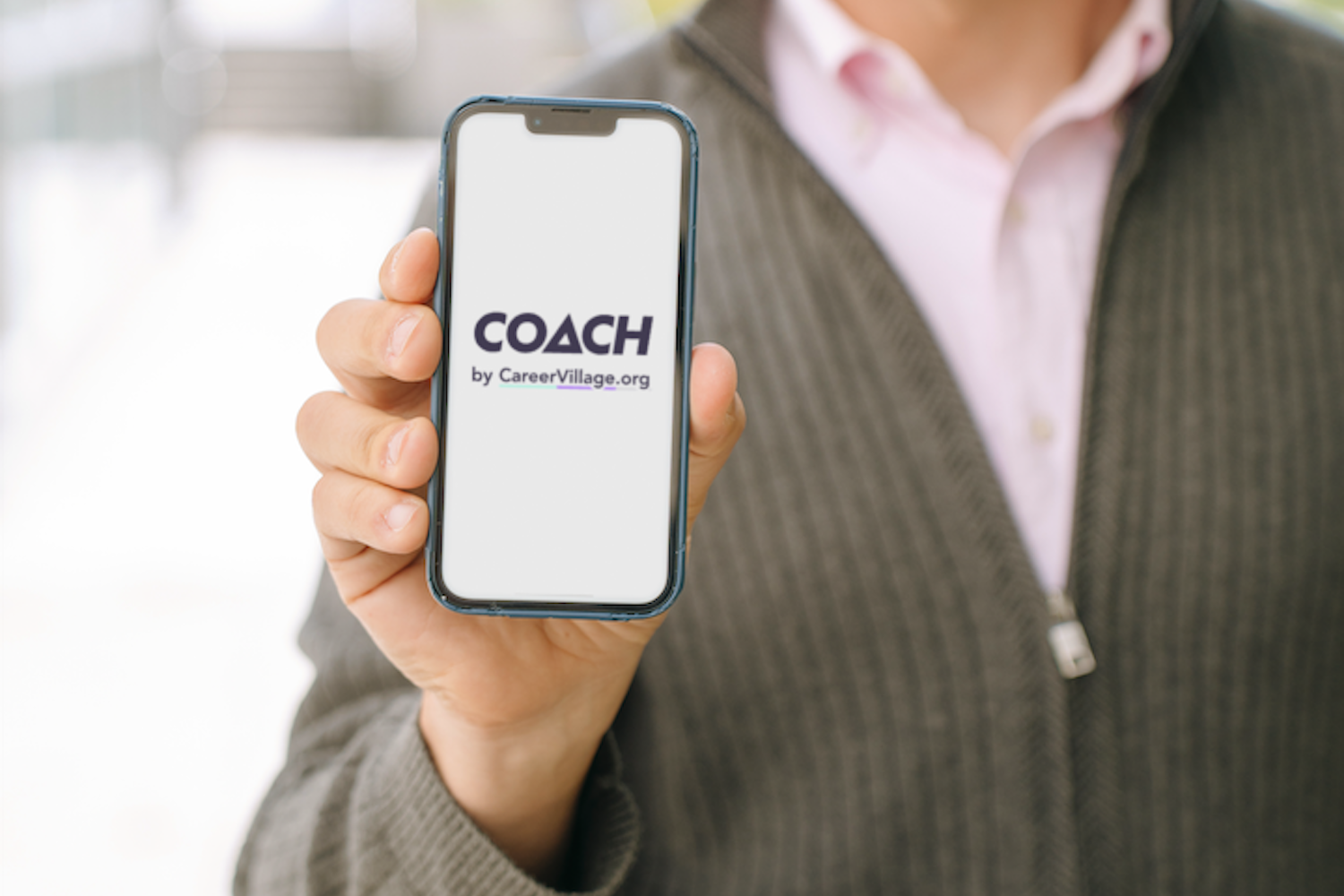
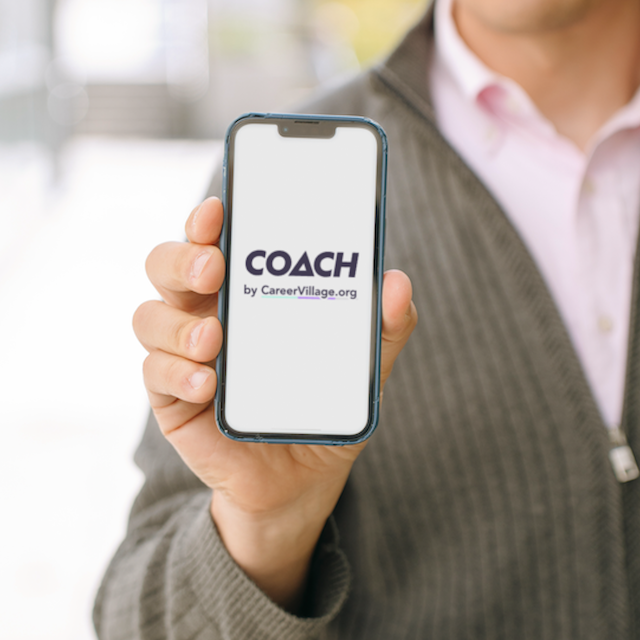
Jared Chung, founder of the nonprofit CareerVillage, shows the welcome page for the organization's new AI career coach. (Image courtesy of CareerVillage.)
The transition from school to a career is fraught with challenges that hinder students from entering the workforce.
Studies show that the majority of graduates in the United States feel unprepared to make critical decisions about their education and careers after leaving high school, have no defined educational or career path when they graduate, and feel unprepared for such life-altering decisions.
What’s more, in the United States, the average ratio of students to school counselors is 350:1, they are overworked and unevenly distributed.
“It's extraordinarily rare for a young person, to have access to a counselor or an advisor or a career coach," said Jared Chung, founder of CareerVillage. "Often, they're entering the labor market for the first time without having had any kind of coaching about how they should be applying, or how to prepare for an interview, what to wear for the kind of job they’re trying to get into, and how to leverage their network. It disproportionately affects people who already are facing a lot of inequities."
CareerVillage, a nonprofit with over 13 years of experience in providing career advice, just launched a solution to address these inequities. Its new tool Coach, powered by artificial intelligence (AI), is democratizing how people navigate their career paths, especially youth who lack access to traditional career support systems.
The need for such a tool is even more pressing in the face of rapid changes in the labor market due to AI. "We all have to be really good at navigating the labor market even more so now because of how quickly the market is changing,” Chung said.
Coach offers services that range from helping users find internships to assisting with resume writing and conducting mock interviews. What sets it apart is its ability to provide personalized, step-by-step guidance based on real career coaching practices.
"We've designed all these activities based upon the real things that real career coaches do with their clients and based upon the best practices and pedagogy that they use," Chung said.
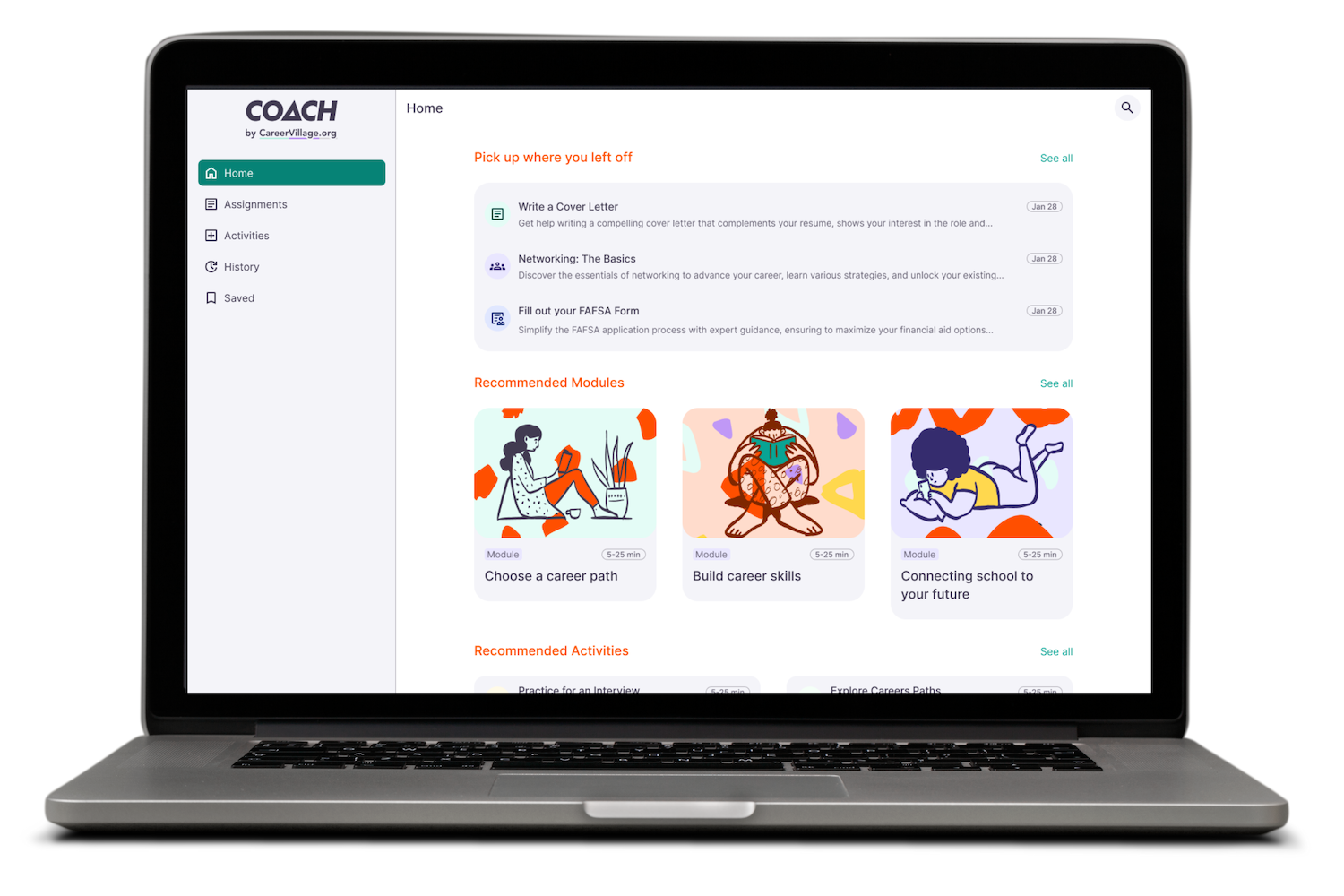
Developing the tool was a collaborative effort involving a coalition of 20 organizations, including experts in various communities, specific subject areas, bias and AI. This diverse input helped ensure the tool's quality, consistency and reliability.
One of the most significant advantages of Coach is its accessibility. It's free for anyone to use, available 24/7 and can communicate in multiple languages. "If anybody is getting ready to enter the labor market or trying to plan for their future, then 100 percent free, unlimited access to world-class career coaching is available," Chung said.
Launched in August 2024, the tool has over 4,700 users across 15 partners in over 70 countries and 10 languages.
"Foundations and donations pay for the public to be able to access Coach for free," Chung said, ensuring that individual job seekers can use the tool without cost barriers.
The impact is already visible. Chung shared the story of a 22-year-old recent immigrant to the United States who used Coach to navigate the unfamiliar U.S. education system. Within weeks, she enrolled in a community college program aligned with her goal to become a chemical engineer — a path she might have struggled to find on her own.
For educational institutions and job training programs that want to integrate Coach into their services, CareerVillage adopted a cost-sharing model. "When we work with an educational institution or a job training program, we share the cost," Chung said.
AI technology can be expensive to develop and maintain, but it’s a no-brainer investment, Chung said. "We're giving people access to personalized, year-round career coaching for a few bucks a year," he said, emphasizing the high return on investment for society in helping people navigate the job market effectively.
The organization’s dual funding approach — philanthropic support for public access and cost-sharing with institutions — will make Coach both widely accessible and financially sustainable in the long term.
The use of AI in career coaching also raises questions about potential biases, so CareerVillage took proactive steps to address these concerns. "If you can identify bias, then you can work it out," Chung said. "I actually think it's far harder to get bias out of a person than it is to get it out of an AI system."
The team implemented monitoring systems to ensure Coach meets their standards, with the aim to detect and correct any issues before they impact users. "Our goal is that we know first and can take action if needed before somebody even has to tell us," Chung said.
The idea for Coach emerged from CareerVillage's long-standing, micro-mentoring program, which has connected young people with over 150,000 volunteers answering career questions online. Despite that program's success in serving millions across 150 countries, Chung and his team found themselves constantly having to decline requests for more comprehensive services like internship matching, resume help and mock interviews, Chung said.
The advent of generative AI technology in late 2022 made them realize that they could easily expand their scope of services. The journey began with a simple experiment in a San Jose library, where Chung tested an early AI chatbot with a teenager seeking career advice.
"It was incredibly obvious that, although you couldn't do everything at that early stage, there was a lot of the stuff that a young person needed," Chung said. This initial success led to the development of a small demo version, created by just five staff members over 10 weeks, which then evolved into the full-fledged Coach tool available today.
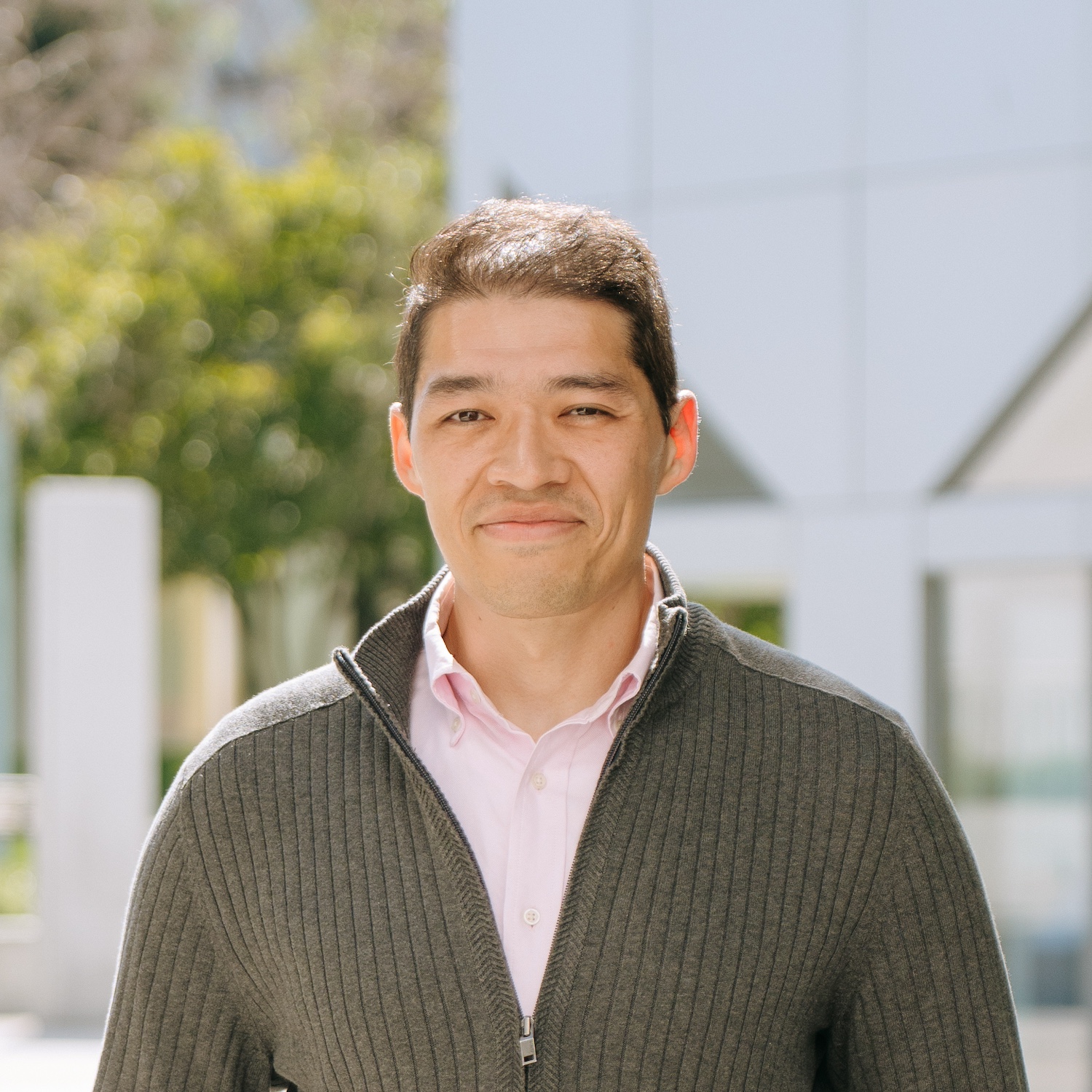
For CareerVillage, the success of Coach isn't simply about user numbers or engagement metrics. "We don't actually care about usage in and of itself," Chung said.
Instead, the focus is on tangible outcomes that benefit job seekers. "What we care about is our learners and job seekers being confident going into their job search, and we care about whether they get the jobs that actually allow them to thrive" he said.
To track these outcomes, CareerVillage is implementing follow-up mechanisms. "There's a moment that we're working toward, or we're building, when Coach reaches out to you and says, 'How did it go? Did that interview go well? Do you need help? Did you get an offer?’” Chung said. This approach will allow the organization to celebrate successes with users and provide additional support where needed.
For institutional partners, success is measured by improvements in job placement rates for program graduates. And as Coach evolves, CareerVillage hopes to gather and share insights to inform broader efforts to support career development, but protecting user privacy remains a top priority, Chung said.
"Where we learn about the kinds of activities that people most benefit from on the path to reaching their career goals, we do hope to share those insights broadly so that everybody in the sector, or just everybody in society, can be involved in making sure that everybody navigates their way to thriving occupation.”
How Funding Open Source Data Can Help Save the Ocean and Mitigate Climate Change


(Image: NOAA/Unsplash)
The ocean is the single most important lifeline for addressing the climate crisis. And that’s not hyperbole. It absorbs 90 percent of the excess heat caused by emissions from industrial activities, which are expected to double by 2030. The marine environment is increasingly vulnerable to pollution, and its ability to regulate global climate and weather patterns is weakening. We’re at a critical junction for saving our planet, yet only 8 percent of the ocean is currently protected.
This October, over 12,000 global experts will arrive in Cali, Colombia, for the United Nation's Biodiversity Conference to revisit the global commitment to ocean protection. Progress will be evaluated in terms of how far we’ve come since December 2022 when over 190 countries adopted a “30x30” target to conserve at least 30 percent of the Earth’s land and water by 2030. This landmark Kunming-Montreal Global Biodiversity Framework marked the biggest conservation commitment the world has ever seen.
But when we’re talking about the ocean, it’s hard to know what’s really going on without the technology to see below the surface. Since the ocean is without boundaries and the high seas are managed by everyone and no one, satellite imagery, artificial intelligence, and innovative research techniques are necessary to gain a true picture of what’s actually happening in the vast blue space that covers 70 percent of our planet.
Fortunately, there’s a rising tide of nonprofit organizations using these cutting-edge data sources to not only analyze threats to the ocean but to make the findings free, easily accessible online and user-friendly. These open-source platforms are revolutionizing our capabilities to monitor what’s happening to our ocean ecosystems and beyond, and empowering governments and local communities to take action.
In February 2023, for example, a fisherman in Indonesia found the waters he fished in daily were polluted by a massive oil spill. There were no boats in sight or clues as to who was responsible. He reached out to the Indonesia Ocean Justice Initiative, which accessed an open-source data platform with satellite information that led them to the source.
A stranded tanker had spilled asphalt and polluted 40 miles of the marine environment, resulting in 641 fishermen losing their livelihoods. This information was given to the Ministry of the Environment to hold the polluter accountable. Without that piece of the puzzle, there’s no telling how long it could have taken to execute a response — and identifying the culprit was almost unimaginable.
Today, a platform like SkyTruth's Cerulean is able to track oil spills and their potential sources in real time, providing global data in the blink of an eye.
Similarly, Global Fishing Watch recently used machine learning to analyze 2 petabytes of imagery — five years’ worth of data — from coastal waters across six continents, producing the first global map of large vessel traffic and offshore infrastructure. It revealed activity that was previously dark to public monitoring systems.
Mermaid is yet another tool using cutting-edge cloud technology to capture a real-time snapshot of the health of coral reefs.
The best part is that because these platforms are all designed for the greater good, we’re working collaboratively for greater impact. For the first time at this year’s UN Biodiversity Conference, for example, all of the available 30x30 data will be aggregated in one place, the 30x30 Progress Tracker. That way everyone can see — with full transparency — how well the world is doing in enhancing ocean protection. Terrestrial data is also added but is not yet as comprehensive as the marine data.
The platform is intended to be used by civil society campaigns, government agencies, and policymakers to track country-by-country progress, identify where biodiversity protections would be most impactful, and hold governments accountable for promises made.
When these tools are not behind paywalls or legal privacy privileges, they become reachable to a wider audience, including underserved communities that might otherwise be excluded from decision-making processes. But “free” data is, of course, not actually free. Satellites must be built and launched, data centers developed and maintained, and most importantly, the findings must be communicated in a way that is understandable and navigable by intended users. All of this requires funding.
Historically, targeted advocacy efforts were more attractive to funders than supporting the infrastructure behind these campaigns. As Virgil Zetterlind, director of ProtectedSeas, said when describing the development of Navigator, an interactive map of critical marine areas: “Our initial global review of our tool took over eight years. These aren’t small projects, and they don’t result in immediate glossy sound bites or TikTok reels.” Not to mention all of these platforms need to be maintained and constantly updated.
Sarah Bladen, chief strategy and external affairs officer for Global Fishing Watch had a similar take. “Tech funders believe in the power of tech for good but they’re also looking for something radical and revolutionary," Bladen said. "The question becomes, 'How do you take this excitement for innovation into funding the long trudge of maintaining this type of open data platform and being able to offer it forever?'”
Fortunately, philanthropists are catching on. Funders such as the Bloomberg Ocean Initiative, The Swedish Postcode Lottery Foundation, and the Anthropocene Institute recognize that impactful campaigns are turbocharged by the vital process of building this type of data backbone for the environmental movement.
“We think it’s important to not only fund open source data that drives science into advocacy and decision-making but also to facilitate transparency and accountability,” said Melissa Wright, who leads the Bloomberg Ocean Initiative at Bloomberg Philanthropies. “Now it’s possible to hold perpetrators accountable, ensure regulators are following through on enforcing policies, and show the opportunity for more action.”
Though there has been progress in funding the democratization of data, there are still key gaps that must be addressed. Data equity is imperative because of significant obstacles that prevent underserved communities from being able to engage in data and technologies, like a lack of access to the internet or a smartphone.
User support is another issue. You can’t build a platform and then just sit back and expect it to be used. Investments are needed to facilitate meaningful partnerships, so we can better understand what people actually need in order to create relevant solutions. Then, we must make sure that stakeholders understand how to apply the findings to bolster their vital campaigns to protect biodiversity and the climate, creating a more inclusive and robust environmental movement.
Open-source data platforms coupled with artificial intelligence is a technological marvel and a game-changer for ocean advocacy and beyond. They provide vast amounts of information faster than ever before, which is vitally necessary at this critical juncture for planetary survival.
2030 is around the corner, and we’re nowhere near our goal of protecting 30 percent of the planet. We must make significant and rapid progress in a short amount of time, and we must make sure the process is inclusive and just. The rising tide of open-source data platforms can propel what needs to be done if we have the investments to expand and maintain these resources, continue working synergistically as a global movement, and do everything we can to form bridges between these powerful tools and those who bear the brunt of environmental harm worldwide.
Tourism Cares is Putting Sustainable Travel Experiences on the Map
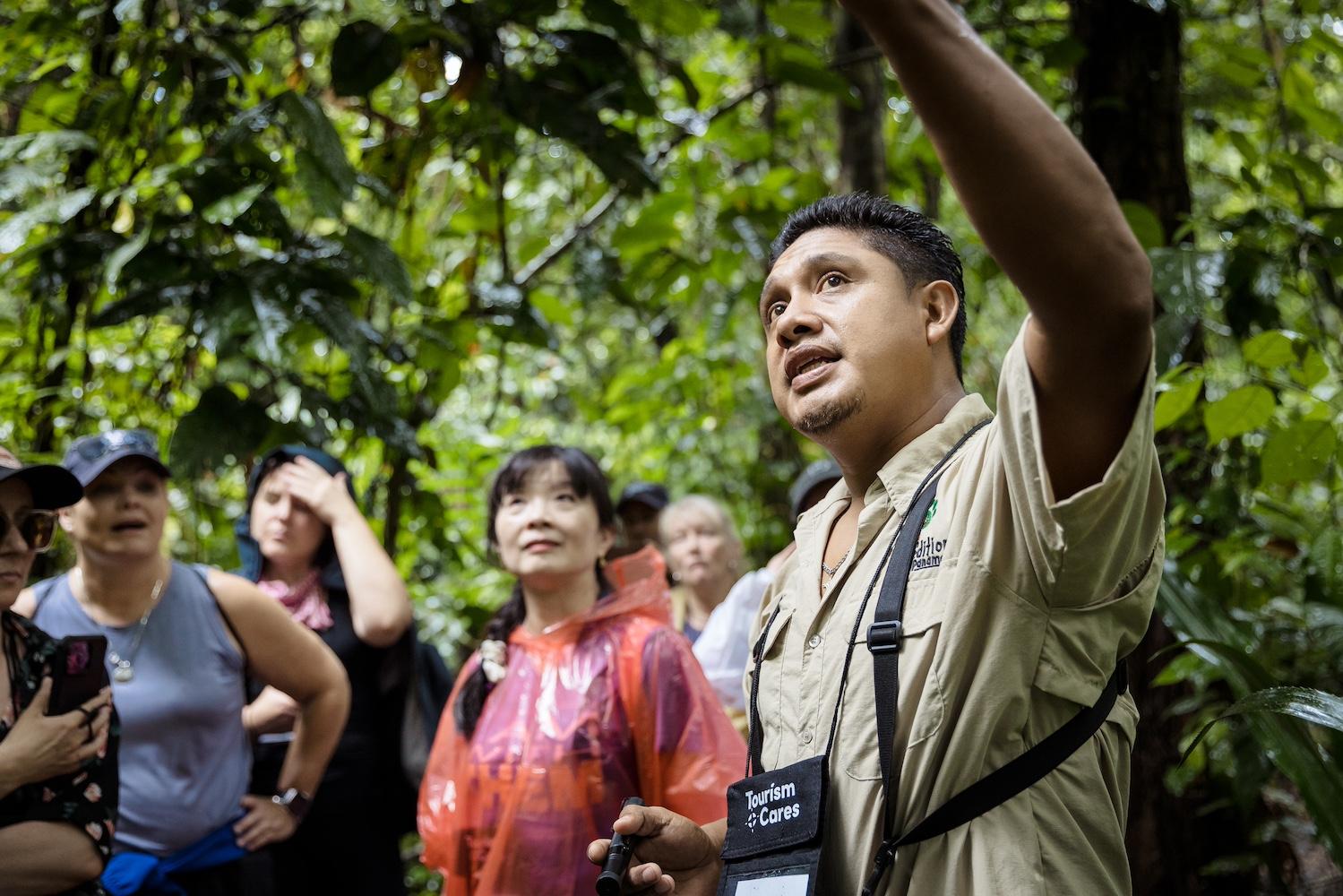
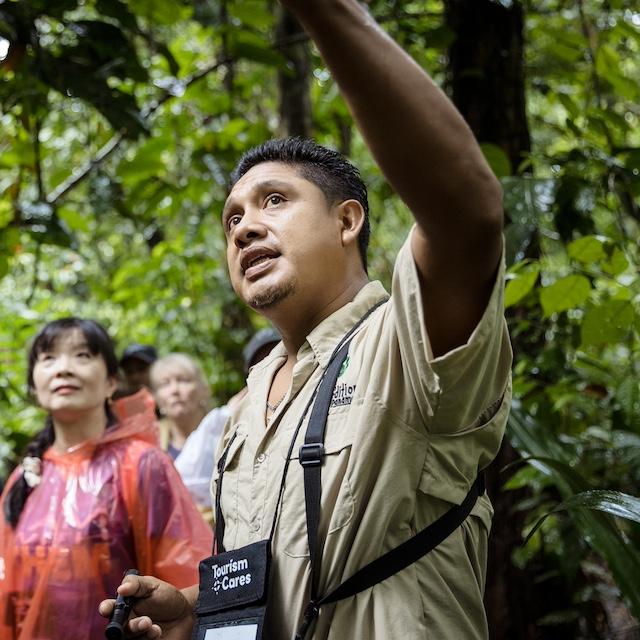
A local guide educates a group of visitors about Panama’s biodiversity on the El Tragon Trail in Achiote, Panama. (Image: Tarina Rodriguez for Tourism Cares)
Just 10 percent of tourist destinations host up to 80 percent of visitors, according to a report by the consulting firm McKinsey & Co. Such overtourism is at the heart of recent backlash directed at the industry. But one nonprofit hopes to encourage industry insiders to promote a more sustainable approach to travel.
Tourism Cares is a business-to-business organization focused on “Inspiring the travel industry to put people and places first.” In order to do so, it developed the virtual Meaningful Travel Map, which features sustainable travel experiences, accommodations and shopping that benefit the local communities.
The consequences of overtourism
Too many visitors crammed into a few popular destinations creates a host of complications. There’s environmental degradation from land being cleared to build resorts, hotels, attractions and roads. Natural and heritage sites suffer from erosion, pollution, and wear and tear as visitors trample through en masse. Cities and small towns quickly become crowded and congested, with infrastructure unable to sustain the surge of tourists. Locals are forced off of beaches and other lands as they’re privatized. And the rise in short term rentals means fewer homes available for those who live in the community.
“You’re seeing a lot of communities being overrun and inundated,” Paula Vlamings, the chief impact officer for Tourism Cares, told TriplePundit. “It’s not great for the traveler, and it’s not great for the community, either.”
This issue led to backlash in places like Barcelona, where locals marched in the streets and sprayed tourists with water guns. And Hallstatt, Austria, where community members blocked the tunnel leading to the small, lakeside village in protest of the 10,000 tourists descending upon them daily.
Ensuring spending actually benefits local communities
While tourism of this scale does bring a lot of spending, very little of that money stays in local communities. That’s where sustainable tourism can make a huge difference. Not only does it protect the quality of life at a given destination, it allows locals to benefit from the influx of cash.
“It’s much better for the community because of this concept of leakage, where a lot of money leaves the local community,” Vlamings said. “That’s where we really want to say go local, local restaurants and impact organizations. Figure out a way to shift [travelers] from the hotel that doesn’t have a sustainability strategy at all to one that does, and see how that can change the carbon footprint of what you’re doing. And your travelers feel like they’re part of the solution instead of part of the problem.”

Being a part of the solution doesn’t have to be all or nothing, she said. Travelers can make a difference one experience at a time.
“If you look to integrate just one experience from the map into that itinerary then you can kind of grow from there,” Vlamings said.
Getting on the Meaningful Travel Map
Organizations have to be vetted before they can be included on the Meaningful Travel Map, ensuring that they meet sustainability criteria. This includes animal welfare standards, child safety guidelines, hiring local guides, and positively impacting the local community — preferably by working with underrepresented or marginalized groups. The map accepts social enterprises, nonprofits, and community-based tourism cooperatives but not big businesses that are already flourishing, Vlamings said.
“We really look to support those kinds of community-driven, community-led, grassroots organizations,” she said. To make it on the map, they must focus on sustainability and regenerative principles, DEI (diversity, equity and inclusion), or protection and preservation of cultural heritage, biodiversity or natural resources.
One featured organization is Café Reconcile, a training kitchen focused on victims of youth violence in New Orleans. Located outside of the city’s main French Quarter, it takes tourists off the beaten path for a delicious meal and immersion into the local culture, while learning about the organization’s community impact, Vlamings said.
What’s not on the map, yet
A quick look at the Meaningful Travel Map reveals an uneven distribution of pins, with vetted organizations clustered together in some areas and other regions that don’t have any. This will change as the map expands into more countries, but that takes time and staff, Vlamings said.
The map began with Jordan in 2018 and Colombia the following year. Since then, partnerships ramped up, and there are currently about 350 organizations featured.
“We tripled the number of destination partners, so the scale is happening,” Vlamings said. “It’s a big, huge world, but we definitely have plans to have representation in all of the communities that we don’t have any pins in yet.”
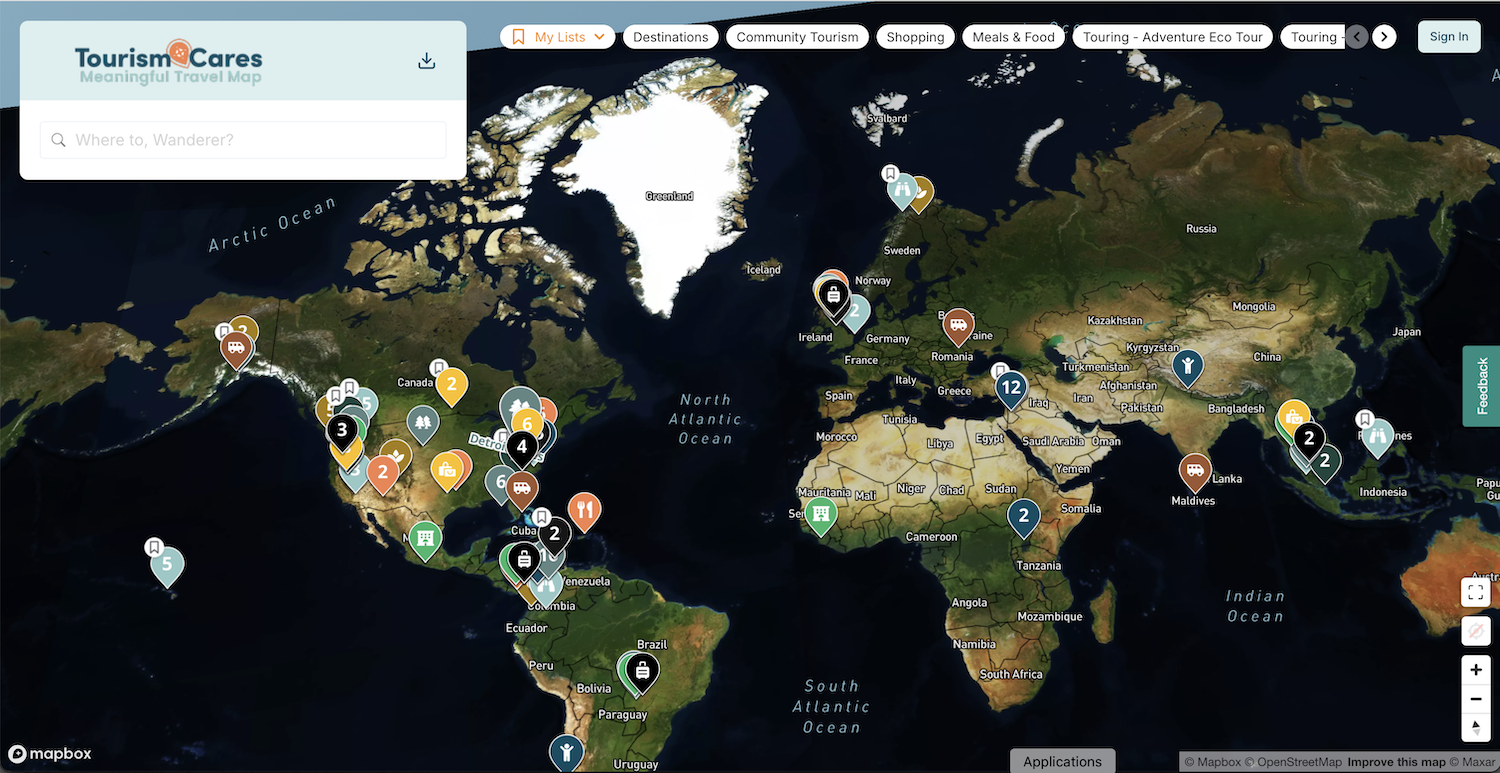
The map helps travel professionals develop more sustainable itineraries, but what about travelers who are visiting destinations that aren’t represented? Vlamings suggests that tourists or their travel providers do a little research into what local nonprofits and social enterprises are doing.
“There’s actually a fair amount of consumer-facing companies and apps and websites that are sourcing sustainable [travel] products,” she said. “What you’re looking for is anything on their website that talks about sustainability. Are they hiring local guides? What is their stance on plastics? Do they have an animal welfare policy?”
Working together towards sustainability
Consumers are increasingly expressing a desire to make their travel more sustainable, and Vlamings said she is confident that the industry is responding to their wishes.
“That’s where we’re really hoping to work with our tour operators to say, ‘Okay, start building this,’” she said. “Just start building your itineraries and your businesses and all of your supply chain more sustainably. And then the traveler can experience that just by going on a trip with you … We’re hoping that impacts the entire industry, because I think one thing we all forget is … every one of these companies sells the exact same place … so it’s in their benefit to work with their competitors around sustainability.”
The Restor Platform Empowers Communities to Restore the Planet
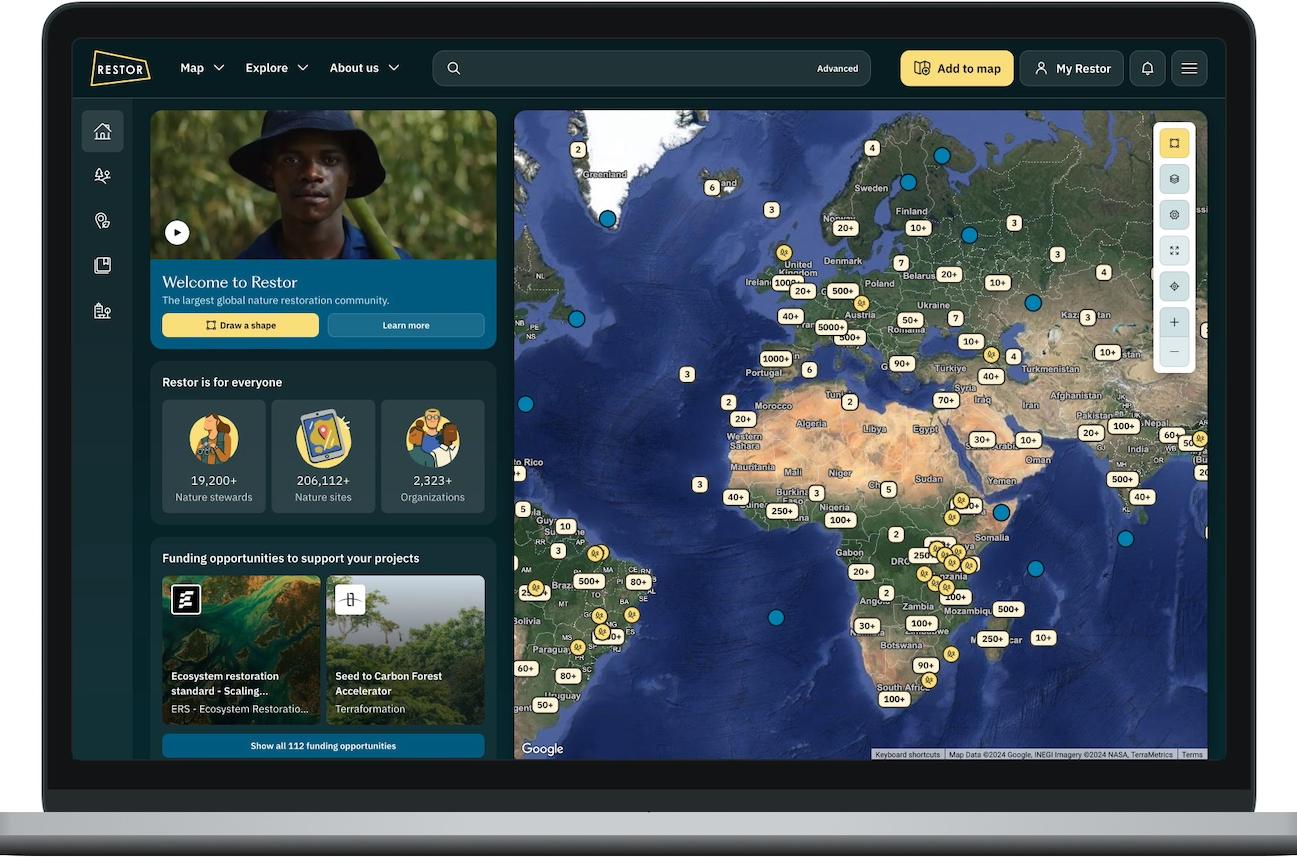
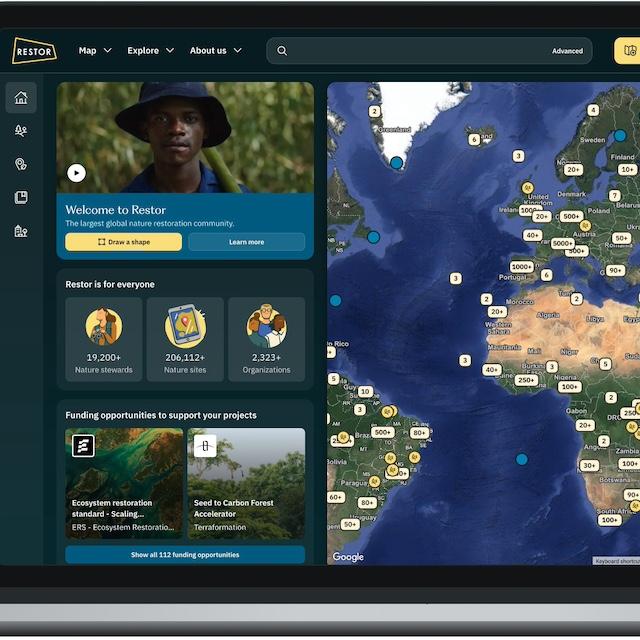
The Restor platform hosts a variety of information on locally-run restoration sites and includes a marketplace for land stewards to advertise the products and services that fund their work. (Image courtesy of Restor.)
With our burgeoning population and sprawling cities, it’s no surprise that humans use the majority of terrestrial land globally. And we haven’t exactly been good occupants. We’re degrading ecosystems from farmlands to forests. Land degradation impacts 3.2 billion people, nearly 40 percent of the world’s population. This fuels the loss of ecosystem services worth over 10 percent of our annual global economic output.
To combat this downward spiral, the United Nations Environment Program wants one billion hectares of land to be restored by 2030. But rehabilitating an area approximately the size of China isn’t easy.
However, there’s a ray of light in the degradation darkness: Restor. Part social network, part marketplace, Restor is a global, open-access restoration platform. Started in 2020, it already boasts over 21,000 users and organizations on its roster. While designed to help the environment, this platform firmly places people first.
The social side of restoration
Land degradation isn’t a level playing field. Much like leafy trees blanket wealthy neighborhoods more than lower-income ones, degradation disproportionately affects Indigenous groups, women, children and people with incomes below the poverty line.
“The underlying driver of degradation, we believe from recent research, is actually inequality,” said Thomas Crowther, a professor of ecology at ETH Zurich, a public research university in Switzerland, and founder of Restor. “We have very rich people with huge footprints. And we have billions of people who are living most closely in association with nature, living below the poverty line, living without the resources that they need to live sustainably. They are forced to live day-to-day, and they have no non-extractive options.”
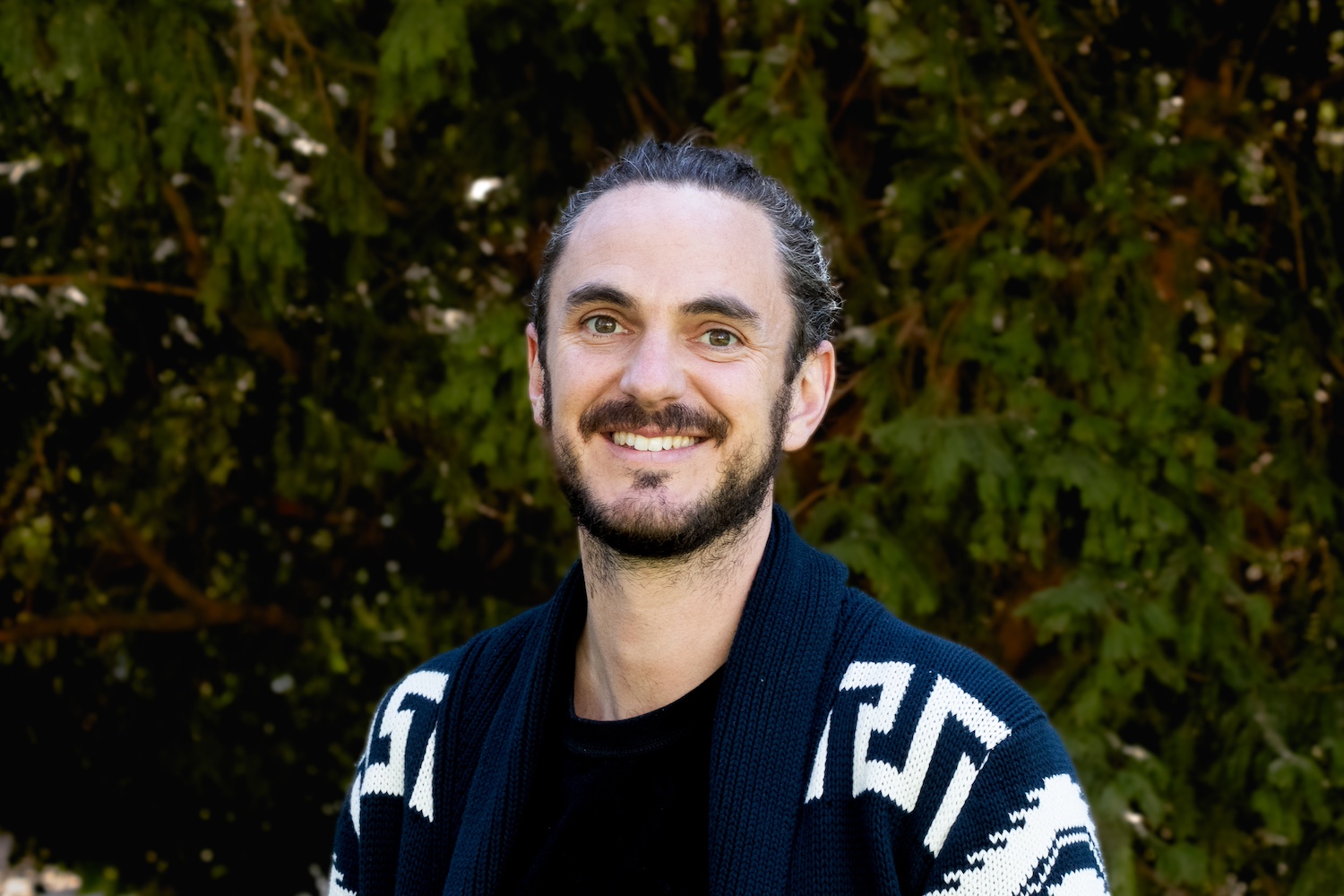
Degraded areas cause numerous problems. For instance, they threaten agriculture and food security, and air pollution contributes to over eight million deaths per year. And that’s not all.
“There are already millions of people experiencing the devastation of climate change and biodiversity loss,” Crowther said. “Heat-related morbidity and mortality are the highest climate-related drivers of death, and that is being faced by billions of people in the global south who are vulnerable to these growing threats.”
Restoration can turn this ship around by fighting global warming while aiding in climate adaptation. For instance, restoring ecosystems can reduce erosion, flooding, and storm surges while cooling temperatures, especially in urban areas. Restoring natural environments also reduces air pollution, provides clean water, improves food security and prevents biodiversity loss.
What Restor offers
With an array of online tools, Restor is tackling the mismatch between healthy ecosystems and degraded ones.
“Our hypothesis was that, actually if we can find and distribute wealth to those local stewards of the people living with nature, that is our best opportunity for ecological recovery,” Crowther said. “That was the mission for Restor — to build a single platform that finds and empowers millions of local stewards of nature.”
Started by Crowther’s lab at ETH Zurich, Restor is now an independent nonprofit organization. The platform covers 209,000 sites worldwide, ranging from grazing land restoration in the United Kingdom to lake rehabilitation in Nepal. And it’s easy to use.
“As a farmer, I can draw out my farm, and I immediately get information about the ecology of the farm,” Crowther said. “I learn about the species that naturally live there. I learn about the carbon that's stored there and the water and how these things are changing.”
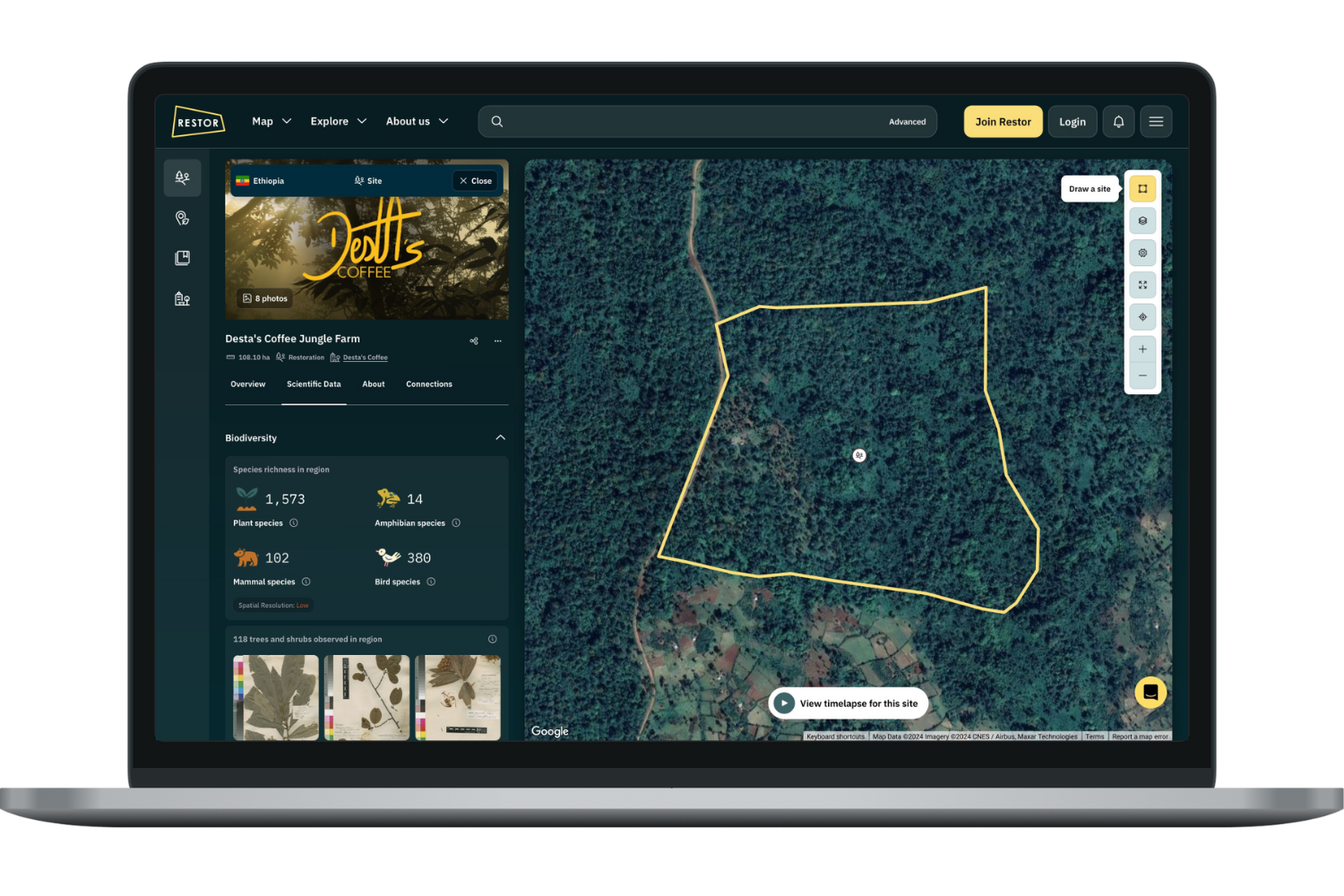
In addition to these factors, users get information about land and tree cover, tree loss over time, biomass, human populations, and other climatic and site measurements. Much like Google Earth, you can zoom into sites for a detailed view and watch time-lapse videos.
All this data can help users manage their land by showing regions with the potential for carbon storage or conversely erosion, for example. But Crowther emphasizes the platform’s goal is to share information and not prescribe what landowners should do.
Restor’s marketplace
Besides learning about their land, Restor users can connect with funders, some of whom already advertise on the platform, Crowther said. And they can reach customers for their products or services.
“In the same way you would use Google Maps, you can find coffee to buy, or you can find holidays to go on or whatever else,” Crowther said. “It's just that you can actually see where those products come from [on Restor].”
One coffee grower’s profits increased by 600 percent after joining Restor and creating a QR code. The code, which let customers see exactly where their coffee is coming from, promoted sales.
“My dream is that you've walked down a supermarket aisle, and you can scan your cereal, and you see where it came from,” Crowther said. “It doesn't need to come from a good project or a bad project, but at least you see it. And that gives you agency to then choose what kind of cereal you want based on its flavor, but also based on its environmental footprint.”
Besides products and services, Restor could help with another tricky market — the one for carbon. While cabon credits have been problematic at times, Restor would boost transparency by allowing potential buyers to see the sites they stem from. It could also used for biodiversity credits, where a buyer pays to conserve or restore a certain amount of land.
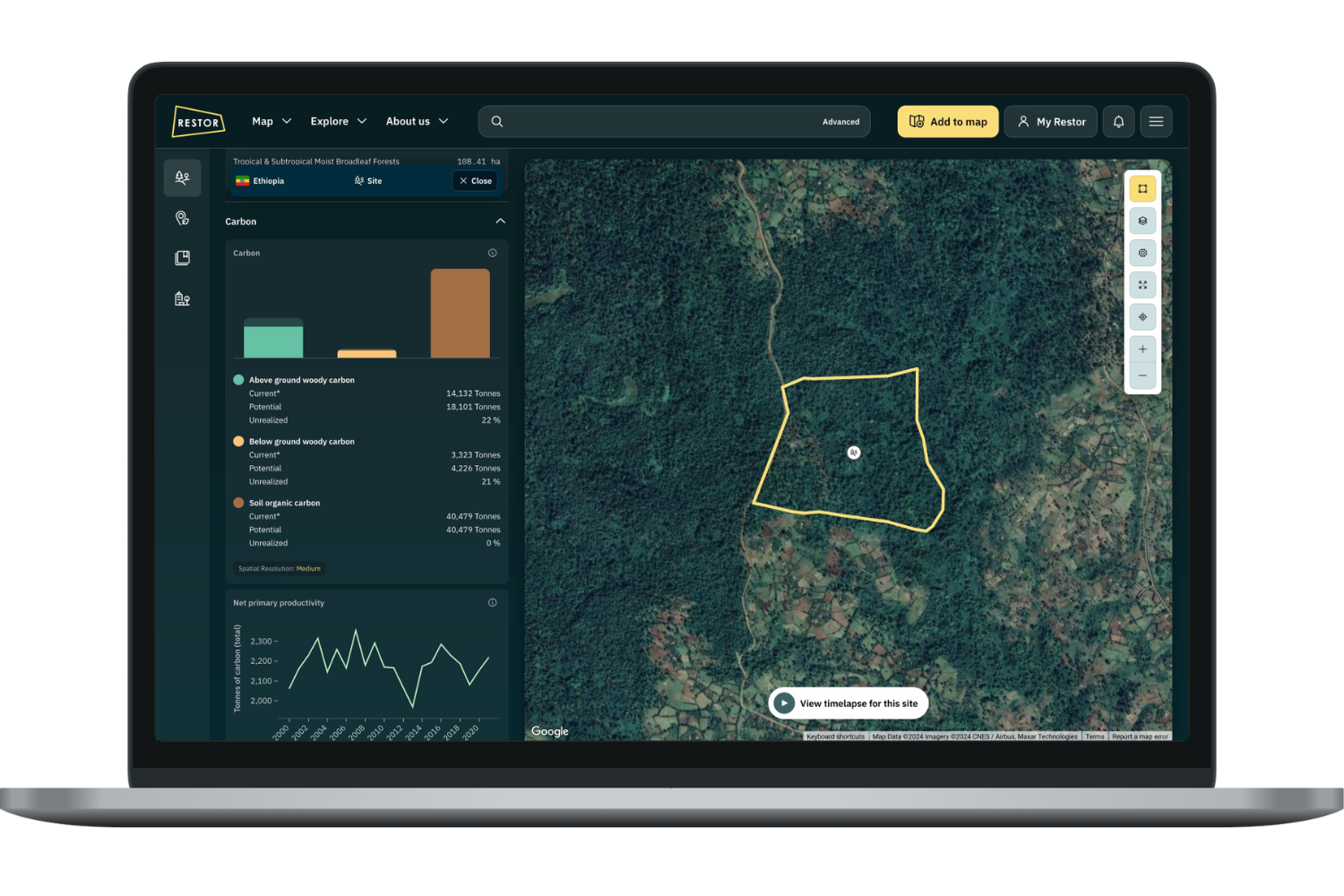
While the platform has a lot of potential, not all of its sites are very healthy or diverse ecosystems. The organization wants both good and bad projects on Restor. It hopes that by doing so landowners can learn from their successes and failures.
The future of Restor
Despite Restor’s impressive record so far, there’s even more coming down the platform’s pipeline. It plans to add bioacoustics data, so when users click on a site, they can actually hear the area’s sounds, Crowther said. This information is useful since the soundscape of an ecosystem can accurately predict habitat quality and biodiversity.
Further, its launching a new way to display portfolios and projects later this year.
“A government could display all 100,000 sites in their country and show the footprint of that nation and how it's progressing,” Crowther said. “The same way a company can display 100,000 sites that they source from, and that would show their aggregated footprint.”
The organization is also working on a verification process for land ownership. While not currently a problem, Crowther is concerned about misuse of the platform as it scales up.
The power of restoration
Restoration is one of the smartest things we can do. Every $1 invested in restoration can generate up to $30 in economic benefits. Plus, it’s one of the rare actions that simultaneously benefits the economy, the environment, human health and food security.
Restor already covers 167 million hectares of restoration projects — an area nearly the size of Alaska — and it’s growing. By giving users the tools and funding they need to restore their land, Restor recognizes the essential link between the environment and people.
“If our society plans to continue in the long term, we just fundamentally have to limit climate change and biodiversity loss,” Crowther said. “It's a global thing, but more urgently, I actually think it's essential for the people who are facing those threats right now.”
Should Business Leaders Experiment to Overcome the Shortcomings of Meritocracy?


(Image: patpongstock/Adobe Stock)
A number of high-profile business leaders have promoted their fierce adherence to meritocracy in their attempts to distance themselves from diversity, equity and inclusion (DEI) principles. In June, for example, Scale AI founder Alexandr Wang posted to X about his company's embrace of a similar acronym to drive hiring policies, MEI, which he said stands for "merit, excellence and intelligence." In an email to employees he included with the post, Wang insisted, "Scale is a meritocracy, and we must always remain one." His stance earned cheers in the comments section from the likes of Twitter owner Elon Musk and Oculus VR founder Palmer Luckey.
At its core, meritocracy is meant to elevate people for roles and promotions based solely on their abilities. But experts like Stuart McCalla, managing partner at the leadership coaching, consulting and investment firm Evolution — and many commenters on Wang's repost to LinkedIn — say it isn't always so straightforward.
"I understand it, and if it was true, it would be a great thing. It would be a wonderful thing if everybody was judged on their abilities, skills and achievements," McCalla said. "But what skills, what abilities, what achievements, and who's doing the judging? And of course, that's where meritocracy breaks down. If you're saying that you are dealing with a meritocracy, or that you are wanting to embrace meritocracy as an ideology, then how do you know the merits you're basing your decisions on don't have bias in them? Forget about unconscious bias. Human beings have cognitive biases, and cognitive biases are regardless of race, culture, ethnicity, orientation and ability."
For example, research shows that most managers — even those with sincere intentions to select the best candidate — tend to hire and promote people like themselves, a type of cognitive bias fittingly known as the similar-to-me effect. This natural human inclination can also creep into the way companies shape seemingly objective requirements for roles and promotions, as leaders intentionally or unintentionally set parameters around degrees, skillsets and experience levels that mirror their own.
"I love when I see a LinkedIn job posting that says you have to have an MBA from a certain school. I'm like, why from this school? It's frustrating to see that level of disconnect in people's minds," McCalla said.
Overcoming the flaws of meritocracy with experimentation
Meritocracy is closely linked to individualism, but in order to the build the type of inclusive culture that drives better financial performance, McCalla says organizations need to pay more attention to the group.
"Let's think about a collaborative model instead of a meritocracy. Let's all get together, whoever's in the room, and let's hear some of the inputs that make anybody within the organization successful," he said.
Many leaders may read that and think it's cryptic: Okay, but practically speaking, what does it even mean? The answer isn't so simple and will be different for different organizations and different workplace cultures.
"People want to go by a [set] playbook, but there's no right or wrong way to do this, so let's experiment our way to coming up with the right thing," he said. "Organizations that can do that end up having a much better experience because not only do they expose their own cognitive biases, their own belief systems that may be holding somebody back, but they also end up learning together as a group, which is way more powerful than the individual. We tend to celebrate too many individuals, and we need to start celebrating teams."
McCalla and other coaches at Evolution often lead the organizations they work with through an experimentation framework with the aim of creating workplace cultures where everyone feels included and empowered to grow in their careers.
This could mean creating space for more employees to speak during all-team meetings or establishing employee resource groups (ERGs) where staffers of similar backgrounds can convene with each other. Or it could expand into more involved projects that seek to address how organizations recruit, hire and promote employees.
One company, for example, realized it consistently sourced young talent from the same colleges and expanded recruitment efforts to historically Black colleges and universities (HBCUs) as a way to diversify the hiring pipeline. Others moved to replace degree requirements with skill-based assessments to determine if someone is qualified for a job, or looked to source talent from organizations like Next Chapter, which trains people in software engineering while they are incarcerated.
"Skills are more important than prestige degrees," McCalla said. "Next Chapter is an incredible example in my mind of taking people who would be considered 'less than' or 'not smart' and using skill-based assessments to give them opportunities. The course of their lives change drastically, because now they have access to a skill that is in demand and incredibly lucrative."
While much of this work is organizational, individual leaders will often find themselves feeling more comfortable talking about DEI and interacting with diverse colleagues through the process, McCalla said.
"There's joy at the end of this," he told us emphatically. "What we get from a lot of the organizations that have persisted with this is a lot of ease. 'Oh my God, I can talk about this stuff. It's easier. I can talk to my ERGs, I can talk to my senior leaders who are diverse and empathize with their experience and feel like I'm not afraid to have deep human connections.' And what happens with that is that then teams feel closer, they feel more connected."
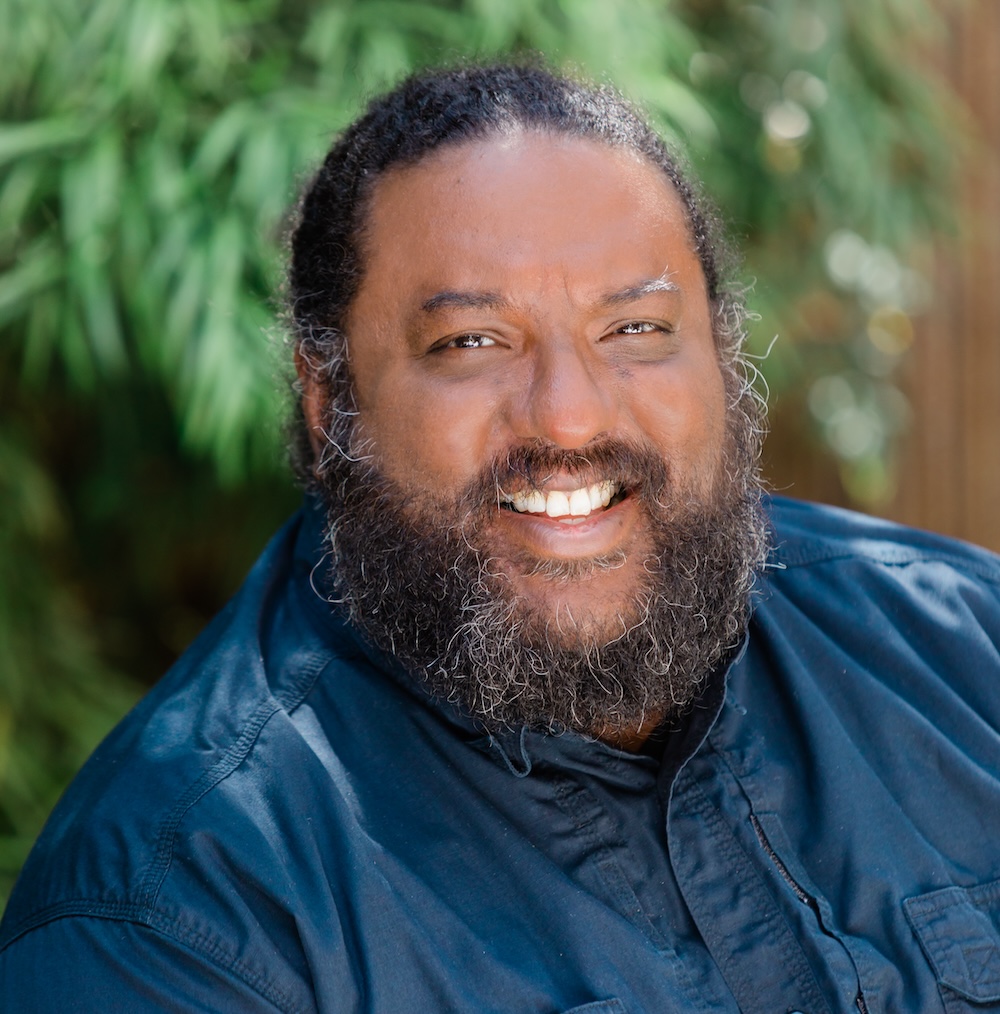
It's not just for organizations: How professionals can experiment their way into the roles they want
Experimentation isn't only for organizations. Professionals can also leverage this mindset to take command of their own career trajectories. "For myself, I started my career in printing ... and that's what got me into tech," said McCalla, who worked in coaching roles at Salesforce, Ticketfly and Lumos Labs before joining Evolution. "I knew I was behind the eight ball in a lot of ways, so what I was determined to do was to experiment my way into getting positions that I wanted."
McCalla's journey from an IT consultant at an NGO publishing health guides to an executive coach for some of the most prominent leaders in tech and business is one he encourages other professionals to follow and make their own.
"A way for a lot of individuals to break into companies and systems is to experiment your way in. Try different things, see what happens, don't be afraid of rejection. Over time, you'll figure out the right path for you," he advised. "It's a great antidote to the shadow side of meritocracy, which is: I believe you can only achieve something if you look a certain way or you come from a certain school or you have a certain pedigree."
The bottom line: Change is challenging, but it's inevitable
Creating more diverse teams and empowering them to thrive is proven to drive business outcomes. Skills-based assessments, for example, are five times more likely to result in hiring top performers compared to hiring based on degrees, according to research from McKinsey, and analyses continue to show that diverse teams perform better overall. But companies are faced with internal and external limitations that can hold them back from doing this work effectively.
"We have examples of brands who tried things that have gotten backlash," McCalla said. "A lot of companies are also facing burnout and change fatigue: 'Why should I even think about this? I just want to do my job and go home and make money and have my kids,'" he explained. "So, businesses are saying, 'We don't want to worry about that stuff.' But the thing I tell them is that your staff, your employees, are being affected by this, and then they're coming into your business and they're fighting, ignoring, whatever it is. Business is a force for change, so think about it."
Considering Generation Z is the most diverse generation in history and places higher value on corporate diversity efforts, the momentum driving companies to become more inclusive is not going anywhere. Beginning the hard work today, and learning and iterating as you go, can better position companies for the future, McCalla said.
"If I could offer anything to the businesses coming up, it’s to understand that we're 24 years into the new century, and the ways businesses were run in the last century cannot work in this new world. We're facing multiple existential crises, and everything's connected, and systemic oppression and DEI are among them," he concluded. "Of the companies we've been dealing with, some have stopped their DEI practices, and it's the companies who see it as more than the phrase 'diversity, equity and inclusion' — but really this idea of ending systemic oppression — that are persisting and continuing."
Wave Energy: An Untapped Resource for Coastal Communities
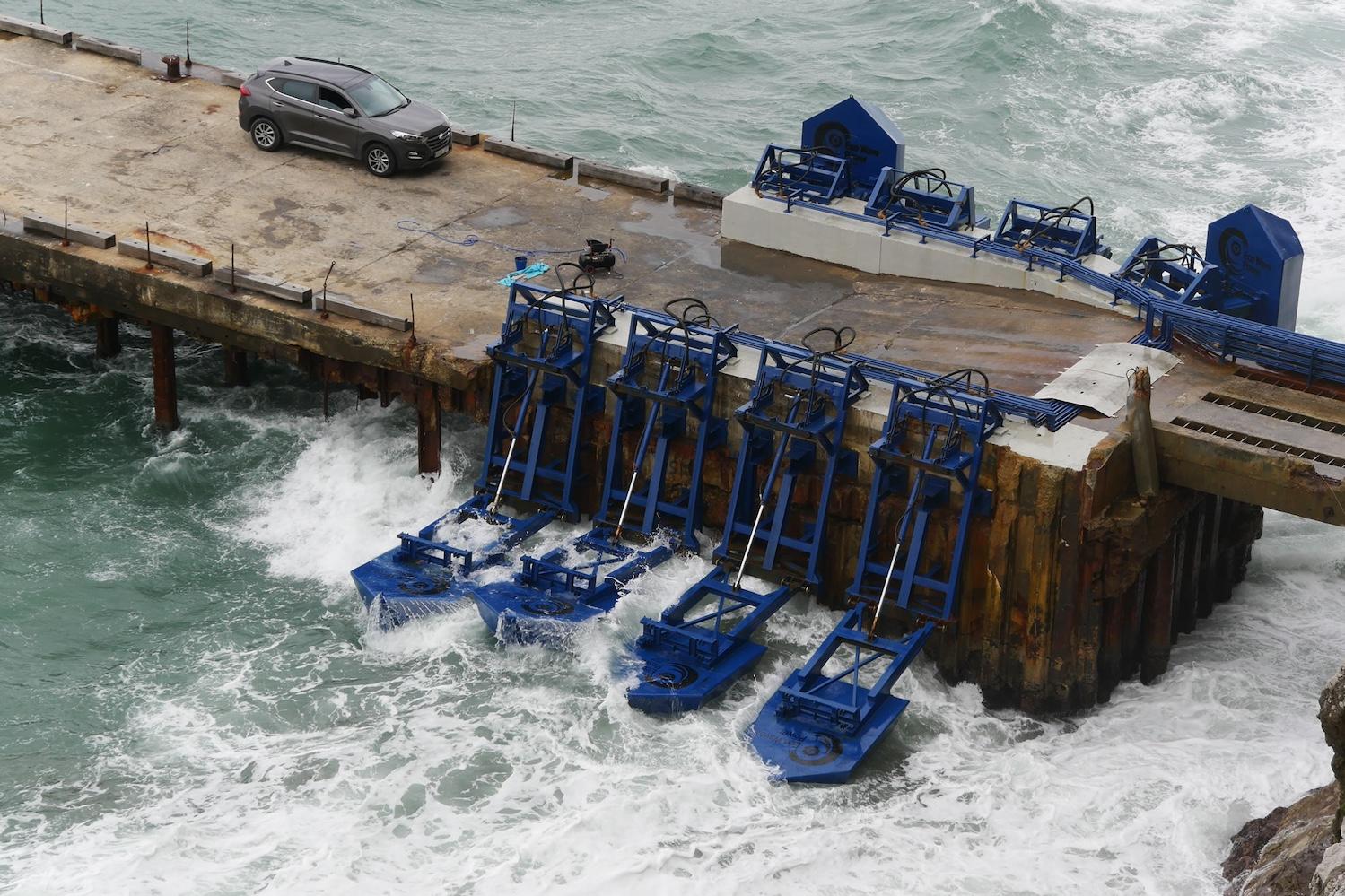
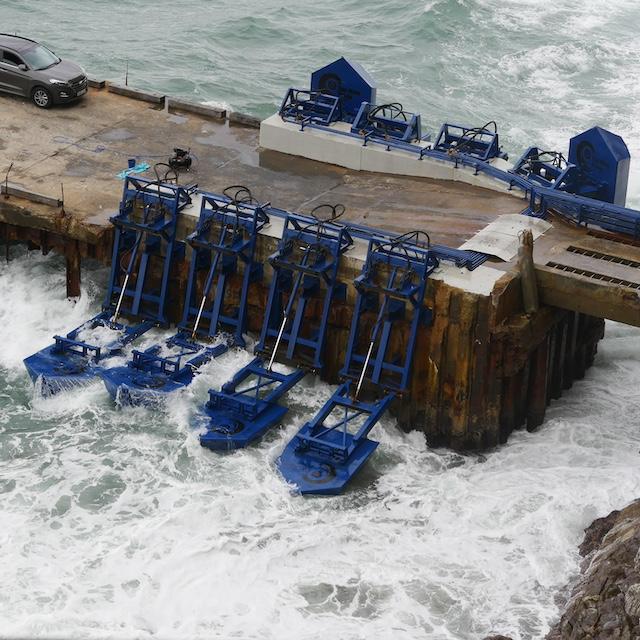
The wave energy company Eco Wave Power attaches its converters to breakwaters and other existing shoreline infrastructure, offering one example of how the low-profile technology can work for coastal communities. (Image courtesy of Eco Wave Power.)
Renewable energy can be a challenge for businesses with a foothold in coastal communities. Nearby land for solar arrays and wind turbines is scarce, and new transmission lines for faraway renewable resources are expensive. One emerging option is wave energy. The potential payoff is enormous, but business stakeholders need to be aware of the obstacles, too.
The enormous potential of wave energy
Wave energy converters are mechanical devices that move with the motion of waves. Some are configured like buoys. Others are designed to be tethered to barges, or attached to seawalls and other coastal infrastructure. Regardless of their differences, all of these devices capture motion in the form of kinetic energy and transfer it to a generator to produce electricity.
The oceans are vast and the motion of waves is constant, opening up a significant opportunity to harvest renewable energy from the sea on a predictable, 24/7 basis. Measuring the amount of ocean wave energy potential is a work in progress, but the most recent assessment of the United States Energy Information Administration cites a figure of up to 2.64 trillion kilowatt-hours. To put that in perspective, if the U.S. wave energy sector was fully built out in 2023 it would have accounted for roughly 63 percent of the total utility-scale electricity generation in the country.
For all its potential, this is considered an emerging technology. Innovators are still trying to find a commercial-worthy balance between cost and efficiency. Because there are so many different variations on the technology, certification and standardization are slow to develop. Engineering a mechanical device that can withstand saltwater and ocean storms adds another layer of complication.
Still, years of research and testing are paying off. A global commercial wave energy industry is taking shape and interest in it is materializing on the user side, with seaports being one likely area of early adoption.
Another challenge for advocates
Overcoming the technology challenges is just one hurdle. As amply demonstrated by the experiences of wind and solar developers, renewable energy projects face opposition from local critics and fossil energy stakeholders, too.
In terms of offshore energy development, wave energy does have one significant advantage. Coastal communities routinely raise aesthetic objections to the size and height of offshore wind turbines, but wave energy devices sit close to the surface of the water, alleviating those concerns.
Still, wave energy advocates are not taking community acceptance for granted. Researchers at the University of Michigan, for example, received a $3.6 million grant from the National Science Foundation that focuses on community engagement for potential projects at two locations, Beaver Island in Michigan and Nags Head in North Carolina.
The multi-institution project aims to create a platform for providing stakeholders with insights into the relationship between wave energy and the needs and concerns of coastal and island communities.
“We need to develop a method to holistically assess wave energy devices, and that's something that can't be done by one person with one area of expertise working individually," said Lei Zuo, the lead principle investigator on the project and an engineering professor at the University of Michigan.
Community engagement is the key to the whole project. “For Beaver Island, wave energy might be a pathway to increased energy security and independence from expensive diesel for the island's back-up generators,” according to the university.
Community priorities at Nags Head may be substantially different. At that location, one potential need could be emergency power after hurricanes and other catastrophes, particularly in regards to running water desalination equipment.
With community input, the researchers will be able to see whether their assumptions are correct. “Coastal communities often know more about what is happening locally on the coast and about what is likely to work for their communities," said Eric Wade, an assistant professor of coastal studies at East Carolina University who is participating in the project.
“Without that community-centric design, renewable energy projects are likely to face terminal pushback,” according to the University of Michigan.
Next steps for wave energy
Economic development and net zero planning also fall under the umbrella of community needs. The energy needs of tourism, recreation, and other coastal industries like aquaculture may encourage communities to consider making space for wave energy in their decarbonization roadmap.
Keep an eye on the U.S. Department of Energy, which is supporting innovators with funding and technical assistance. The department recently announced its largest ever round of funding for wave energy, totaling up to $112 million.
“This investment will help identify and mature high-potential WEC [wave energy converter] technologies, reduce financial risks for developers and incentivize investors, progress technologies at smaller scales while developing toward utility scale, and increase learning for installation, operations and maintenance,” according to the Department of Energy.
In particular, the department is looking for proposals related to coastal community needs such as water treatment. At-sea applications including aquaculture and marine carbon dioxide removal are also targeted. In addition to these decentralized use cases, the department is also encouraging proposals that can be applied to utility grids.
It's planning a five-year timeline for the new program, culminating in commercial-ready wave energy converters. Coastal economy stakeholders can prepare now by reaching out to communities and engaging in discussions about local needs, priorities and aspirations for the future.